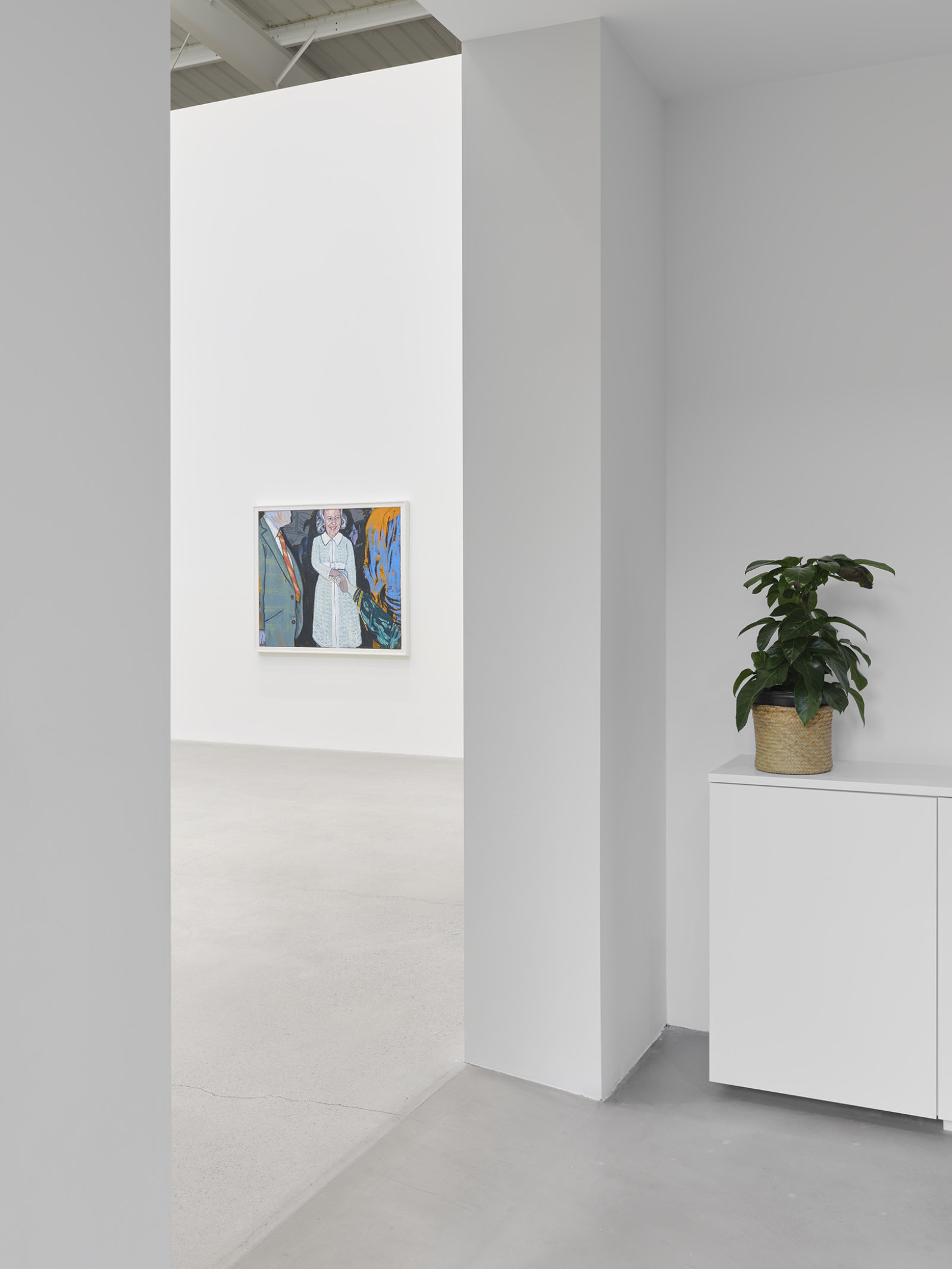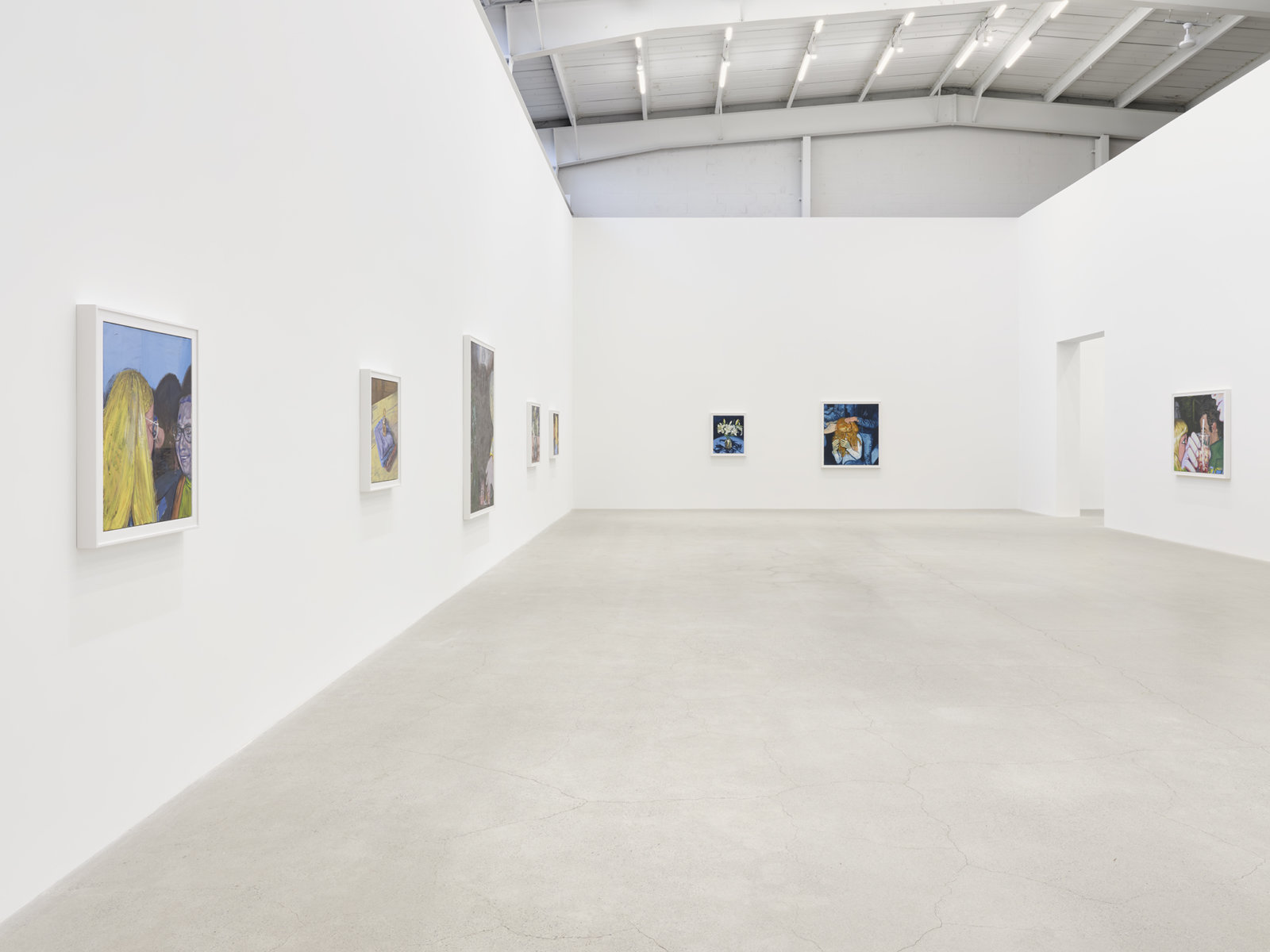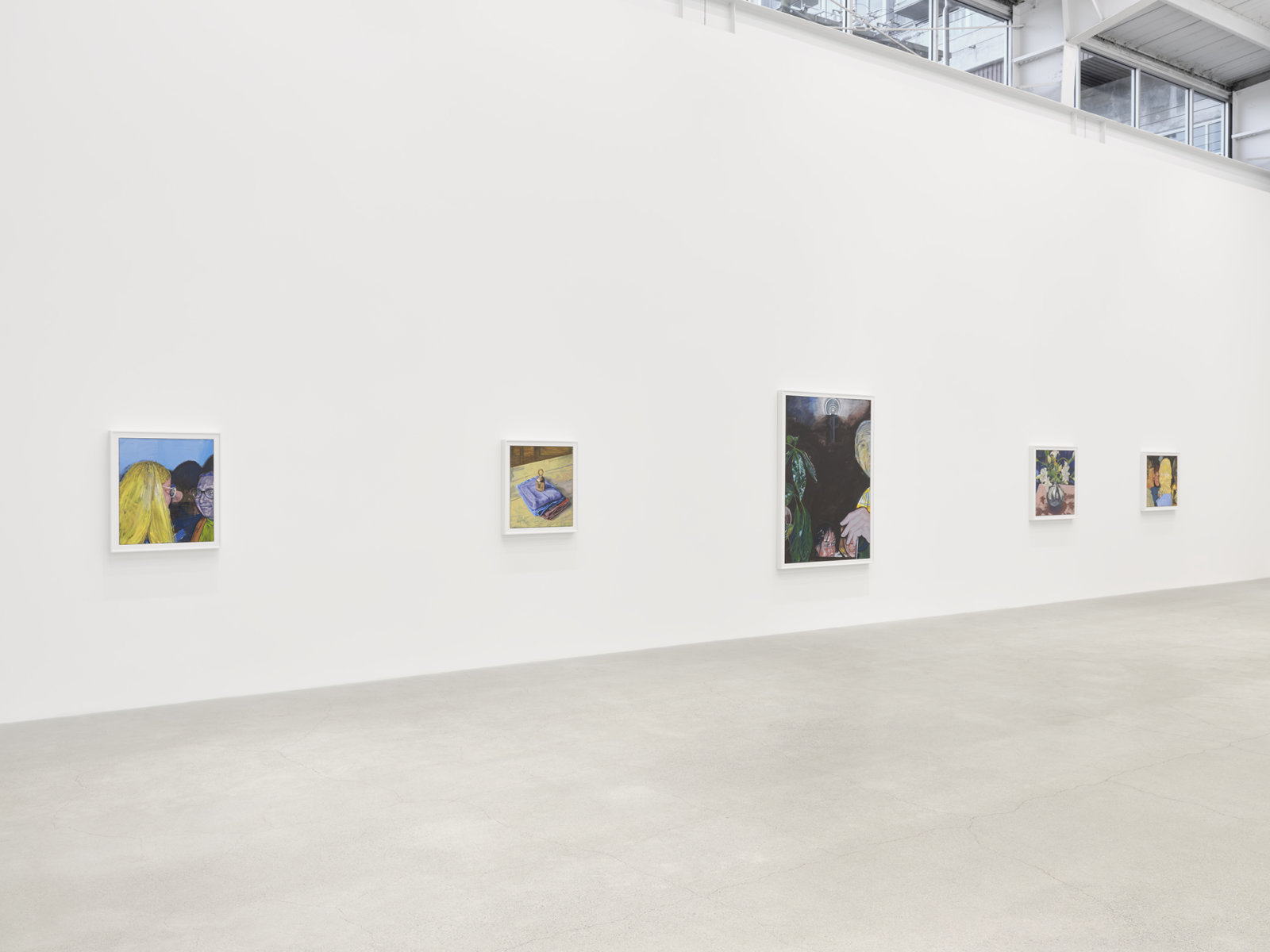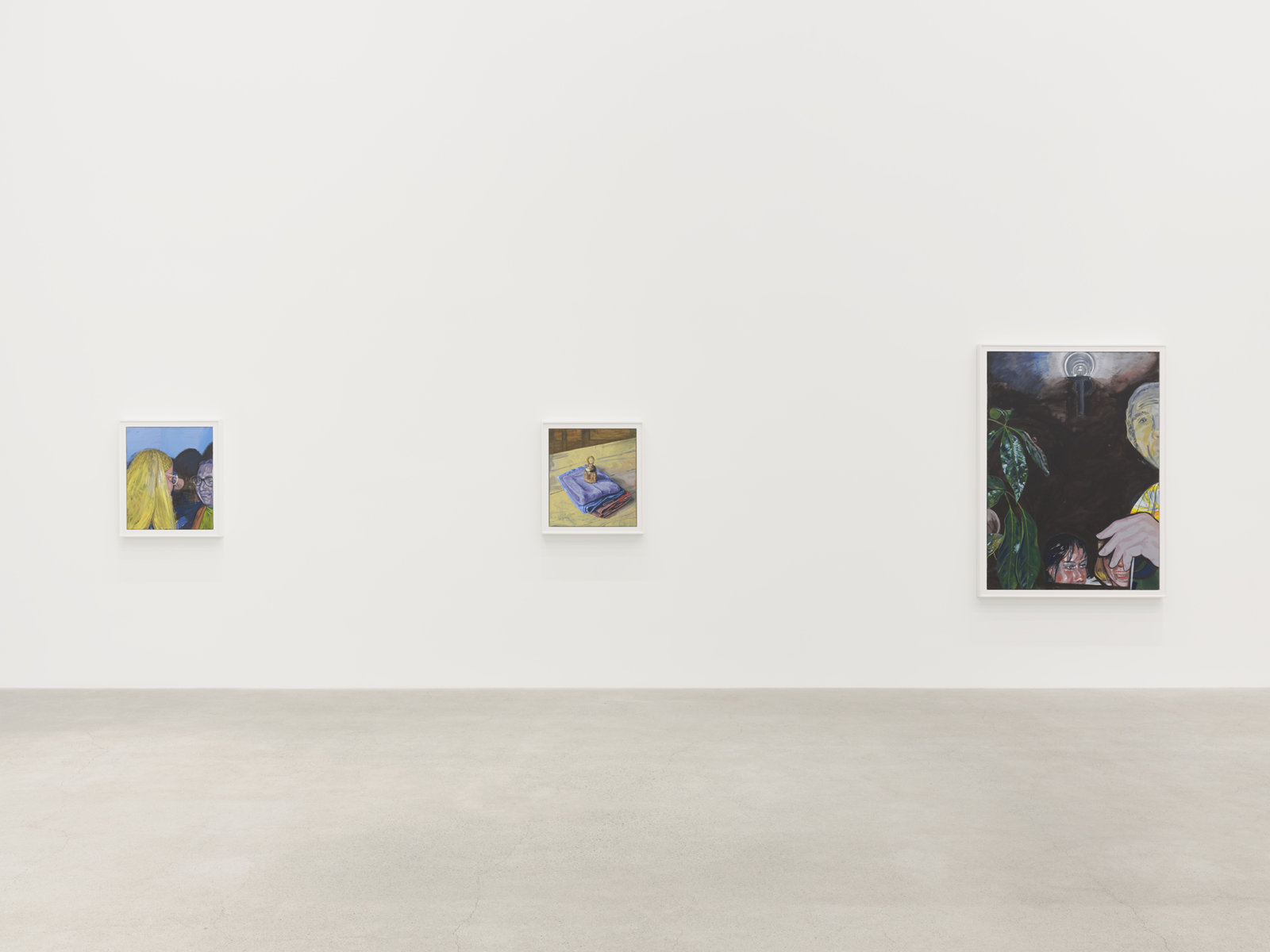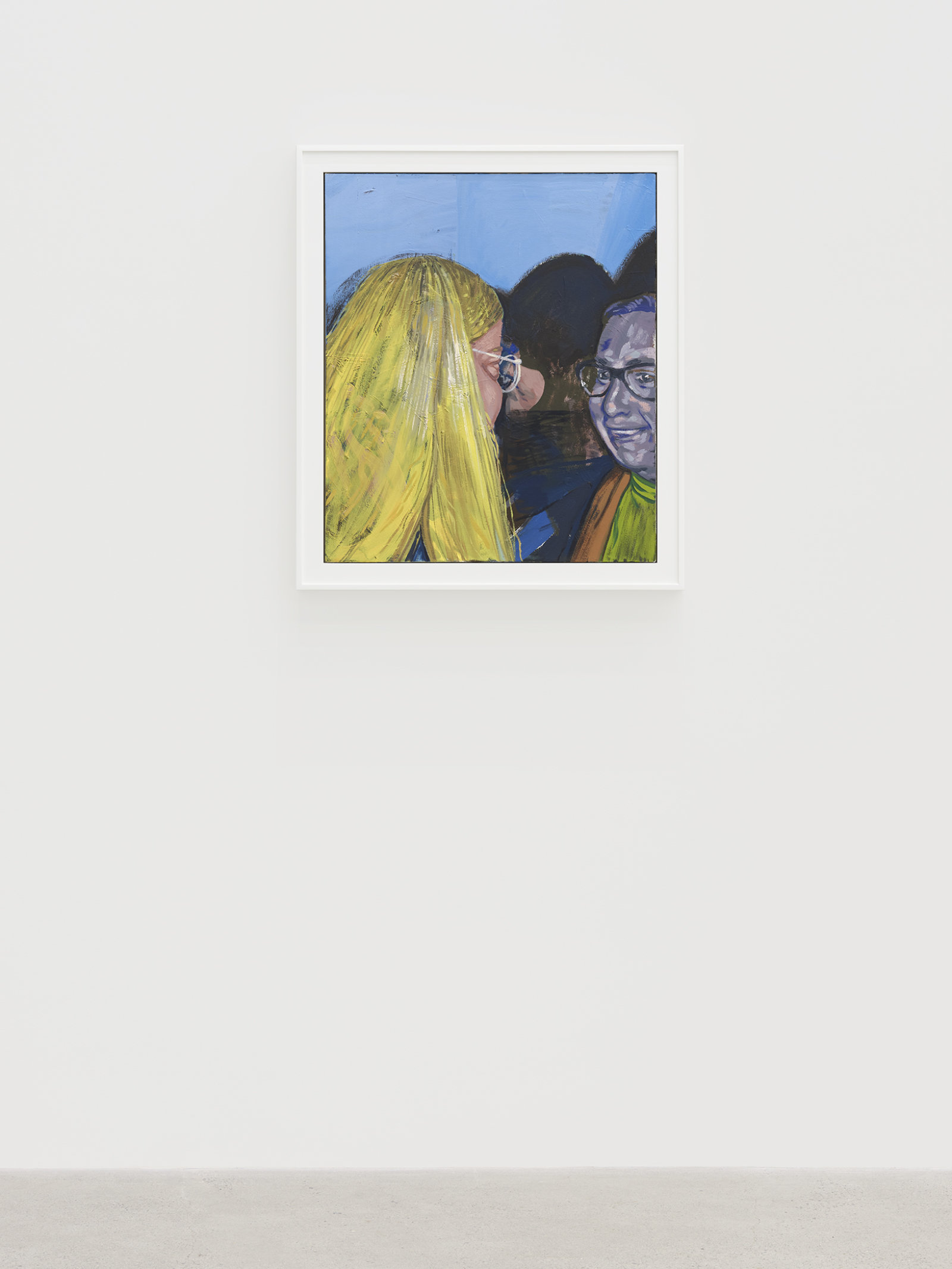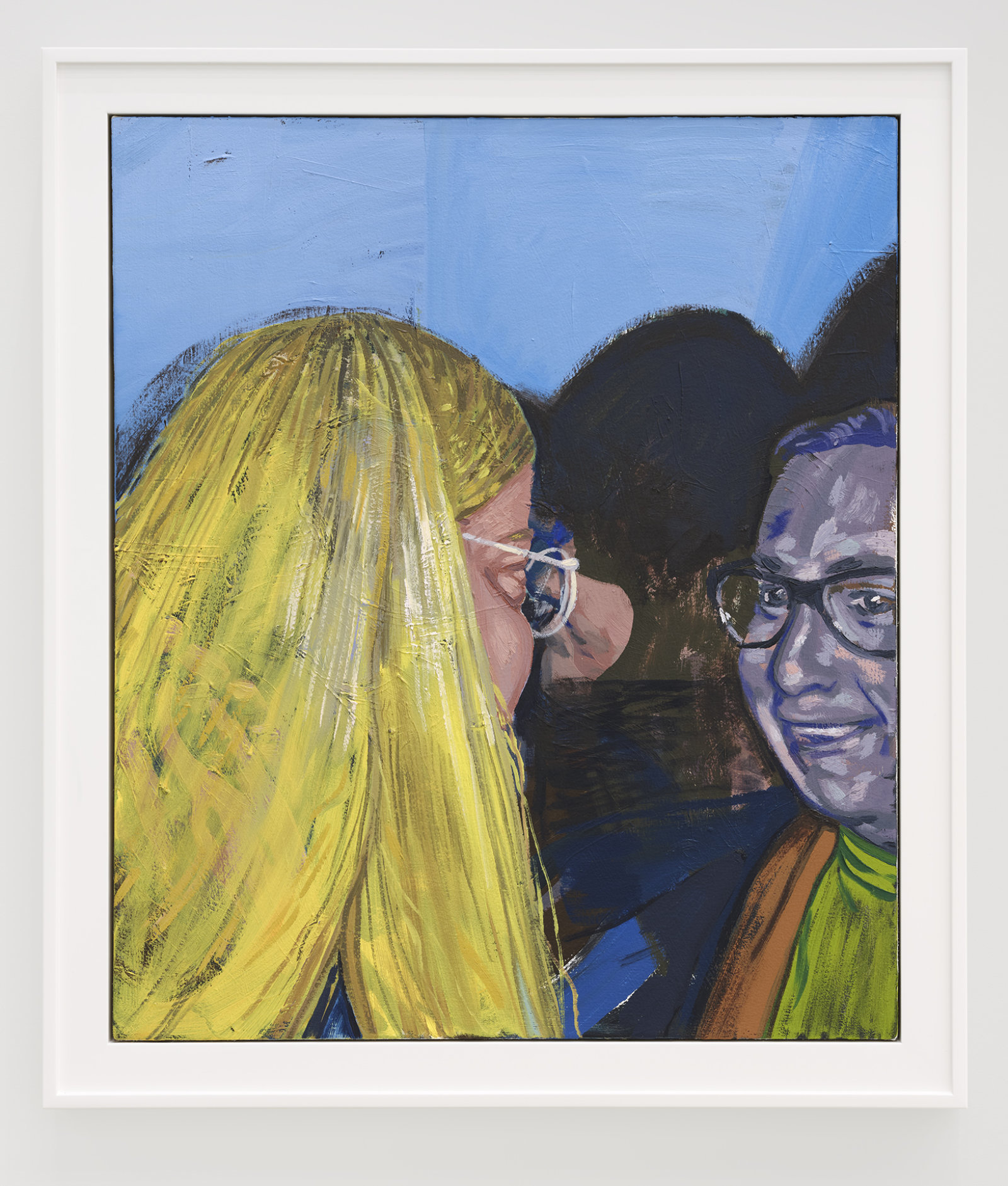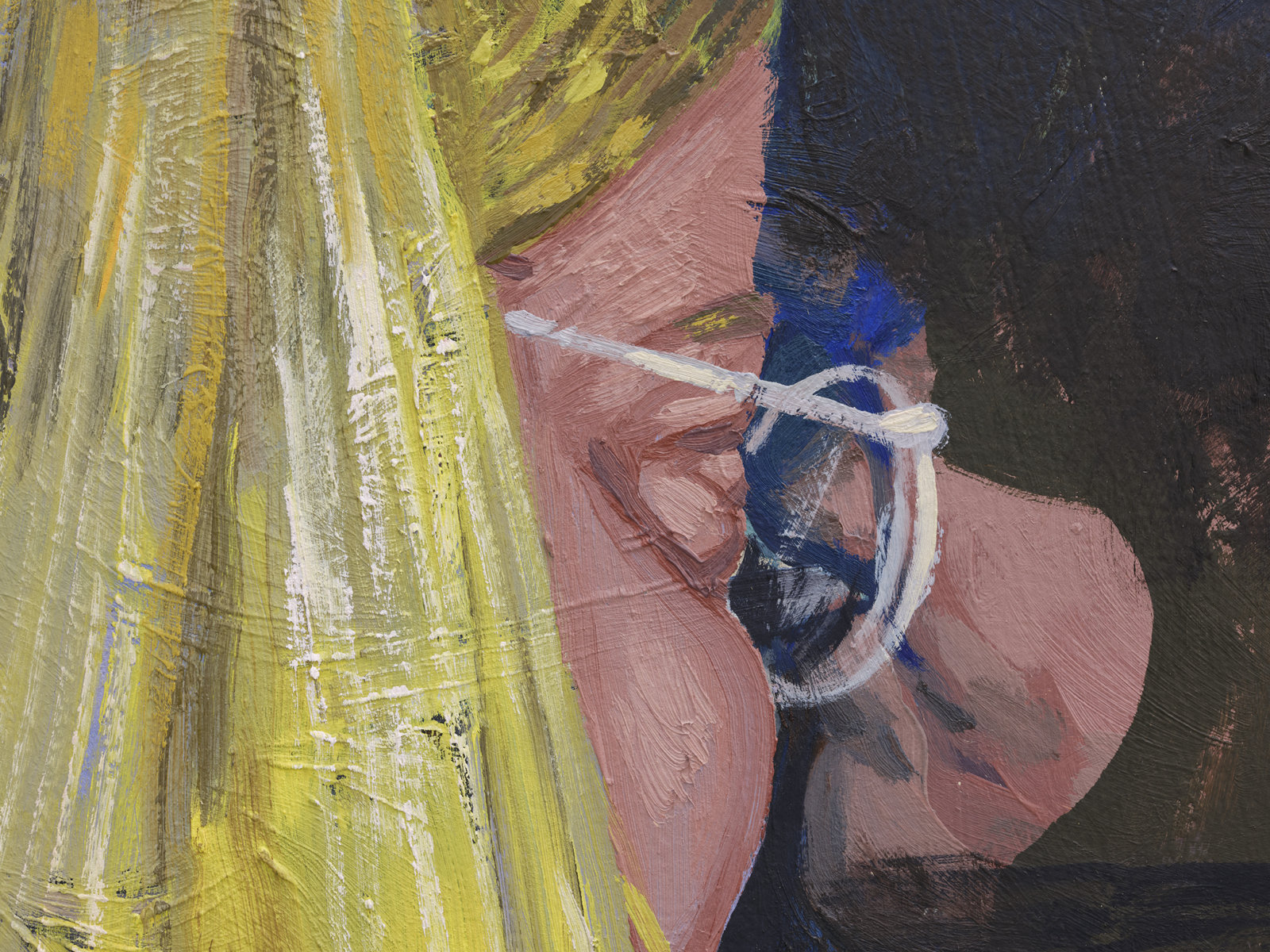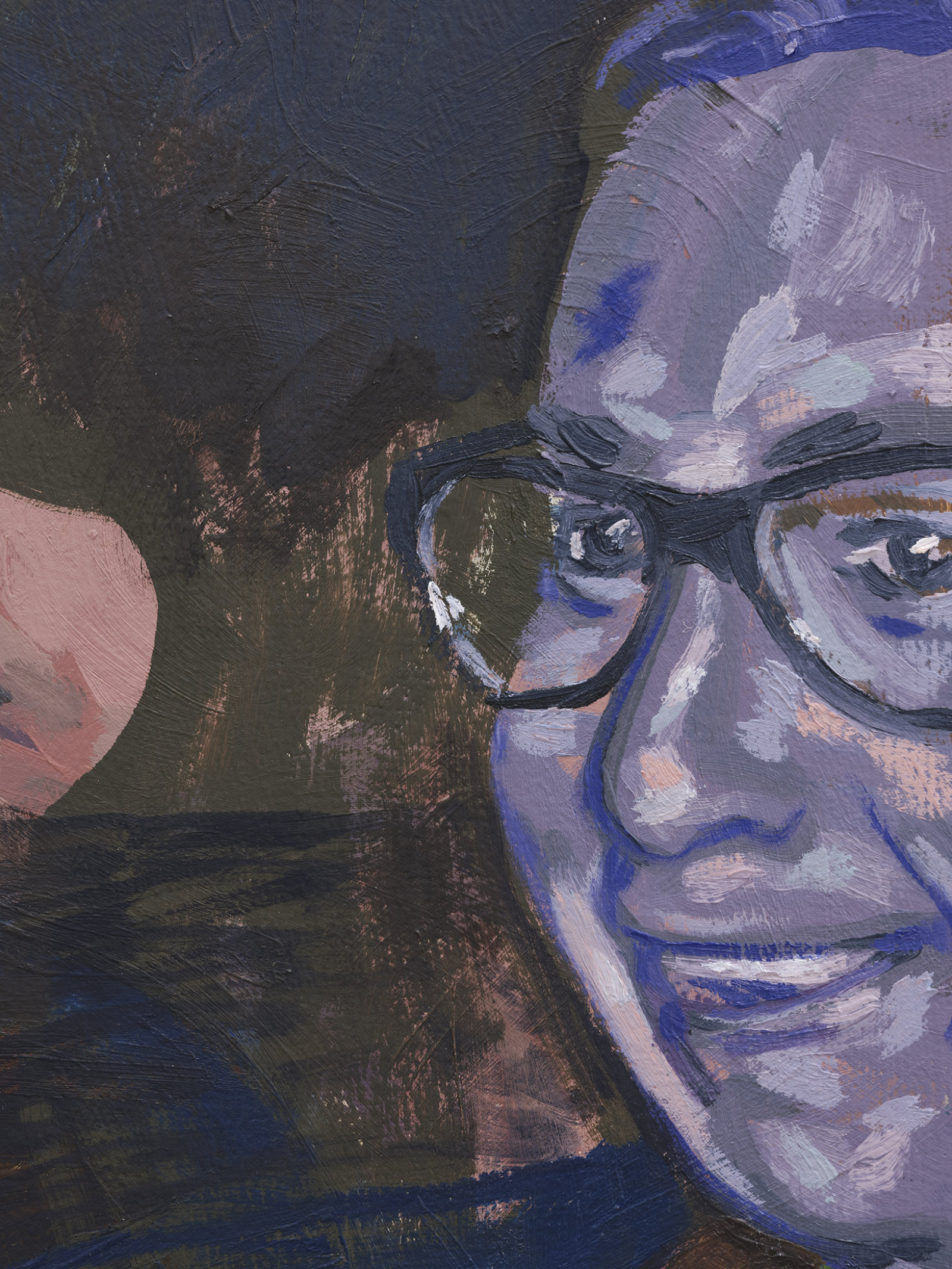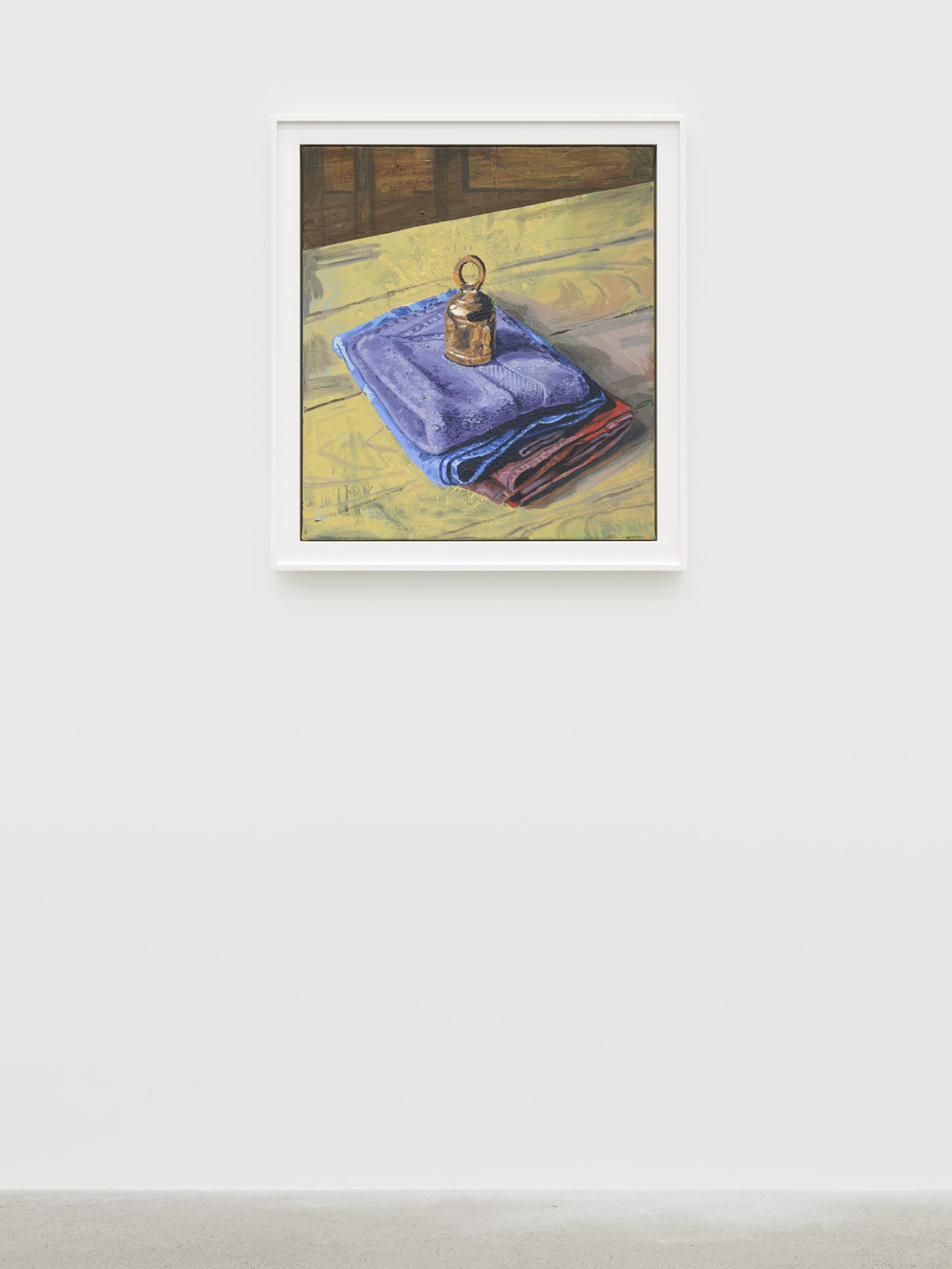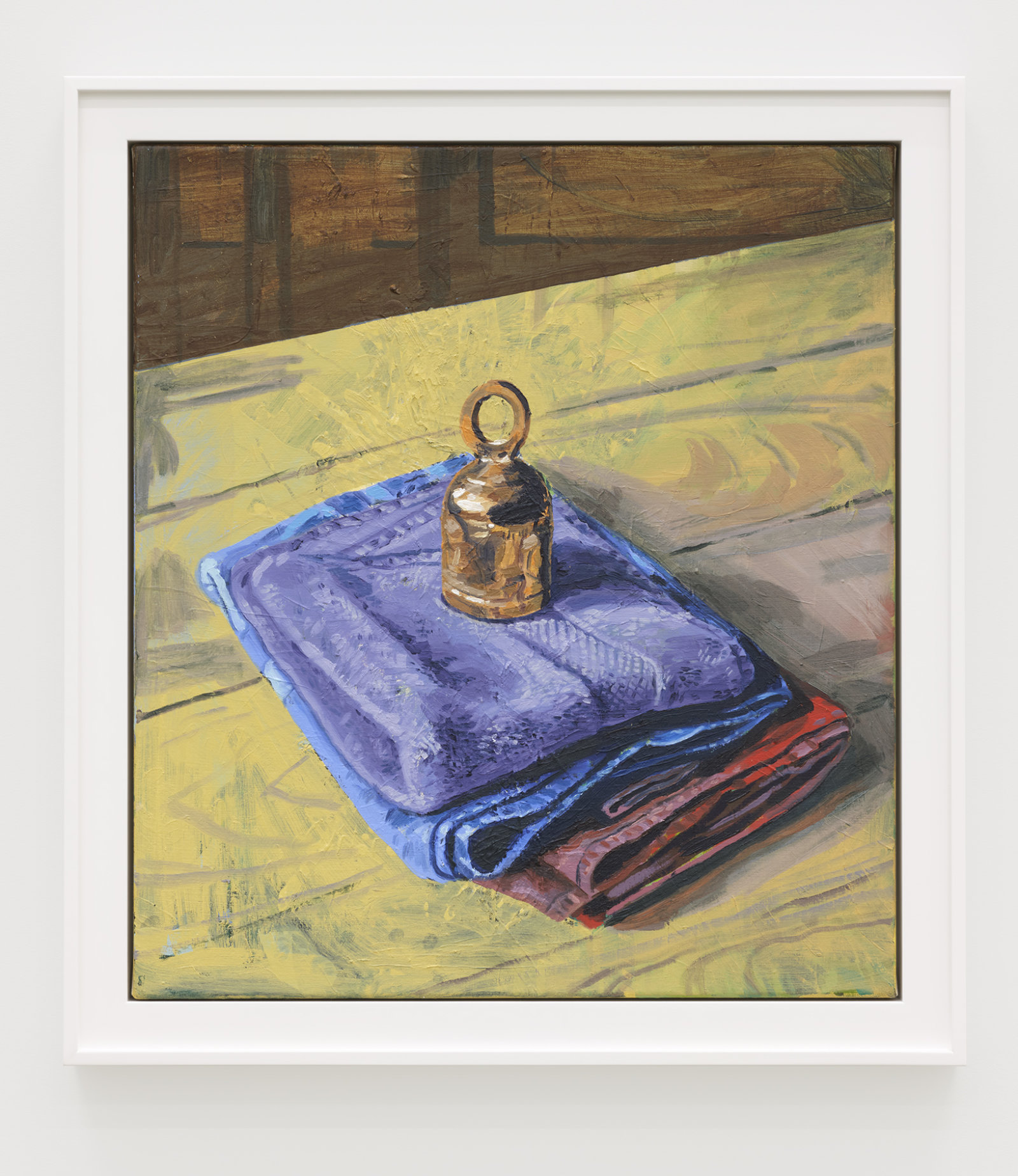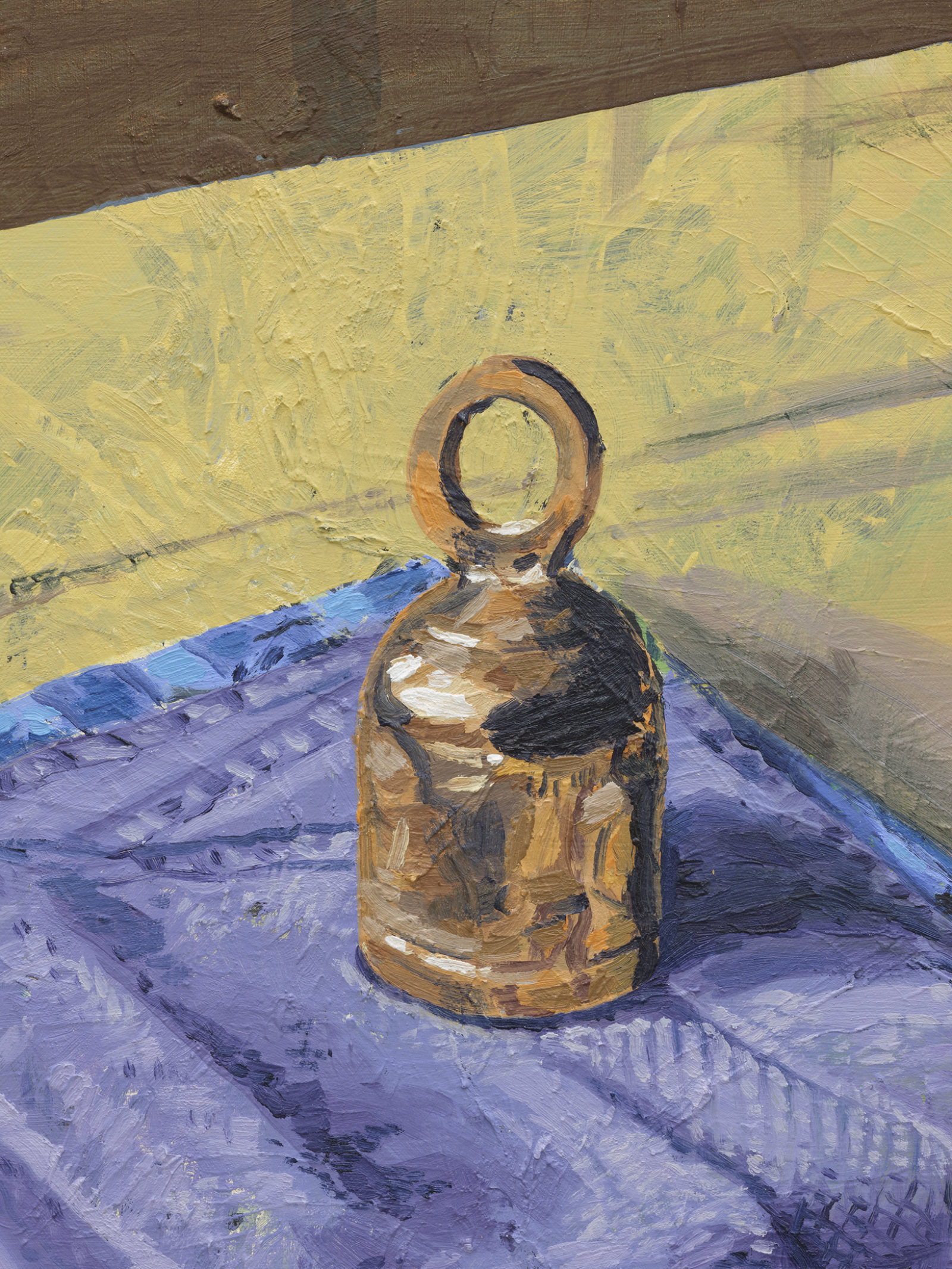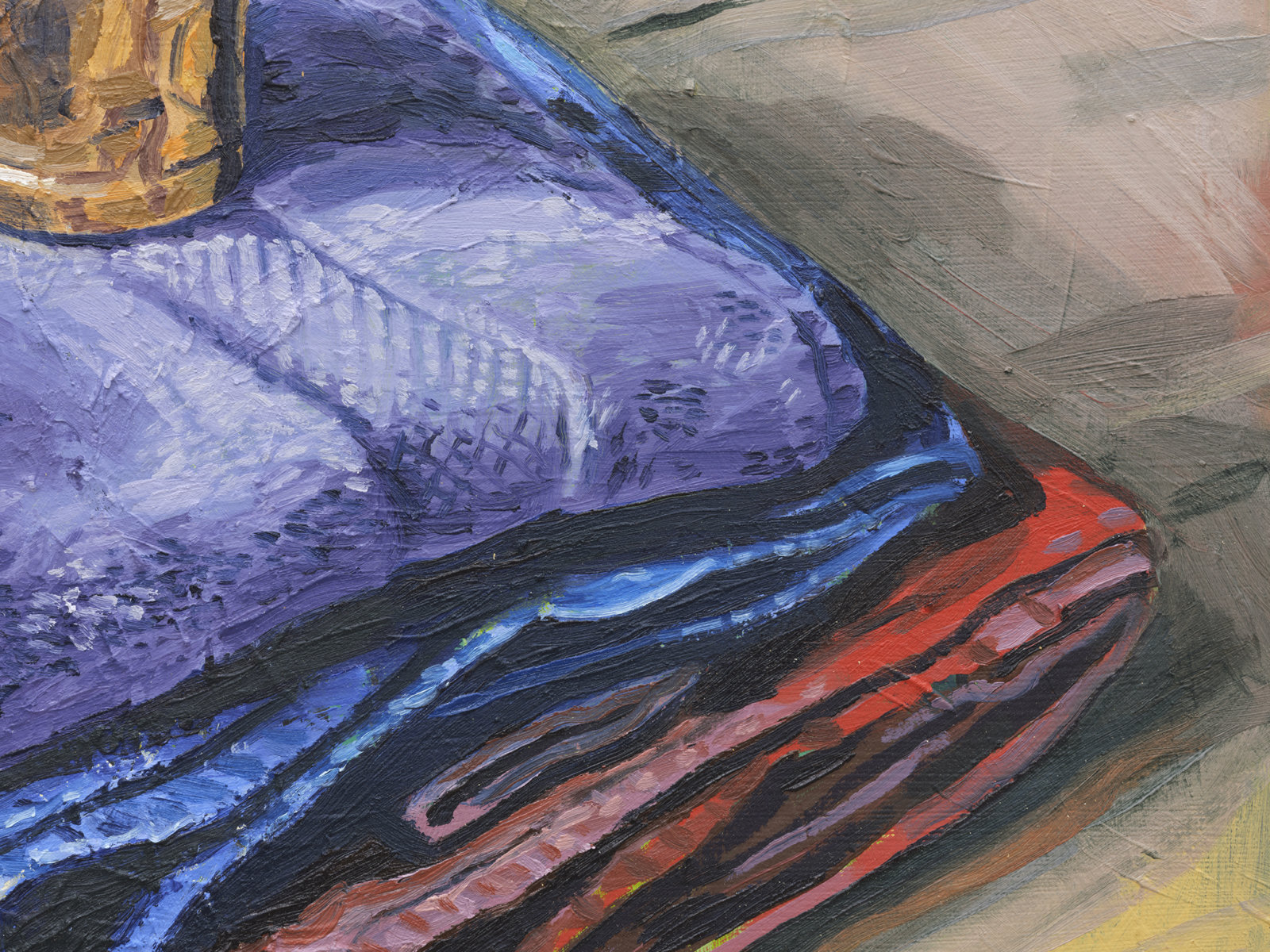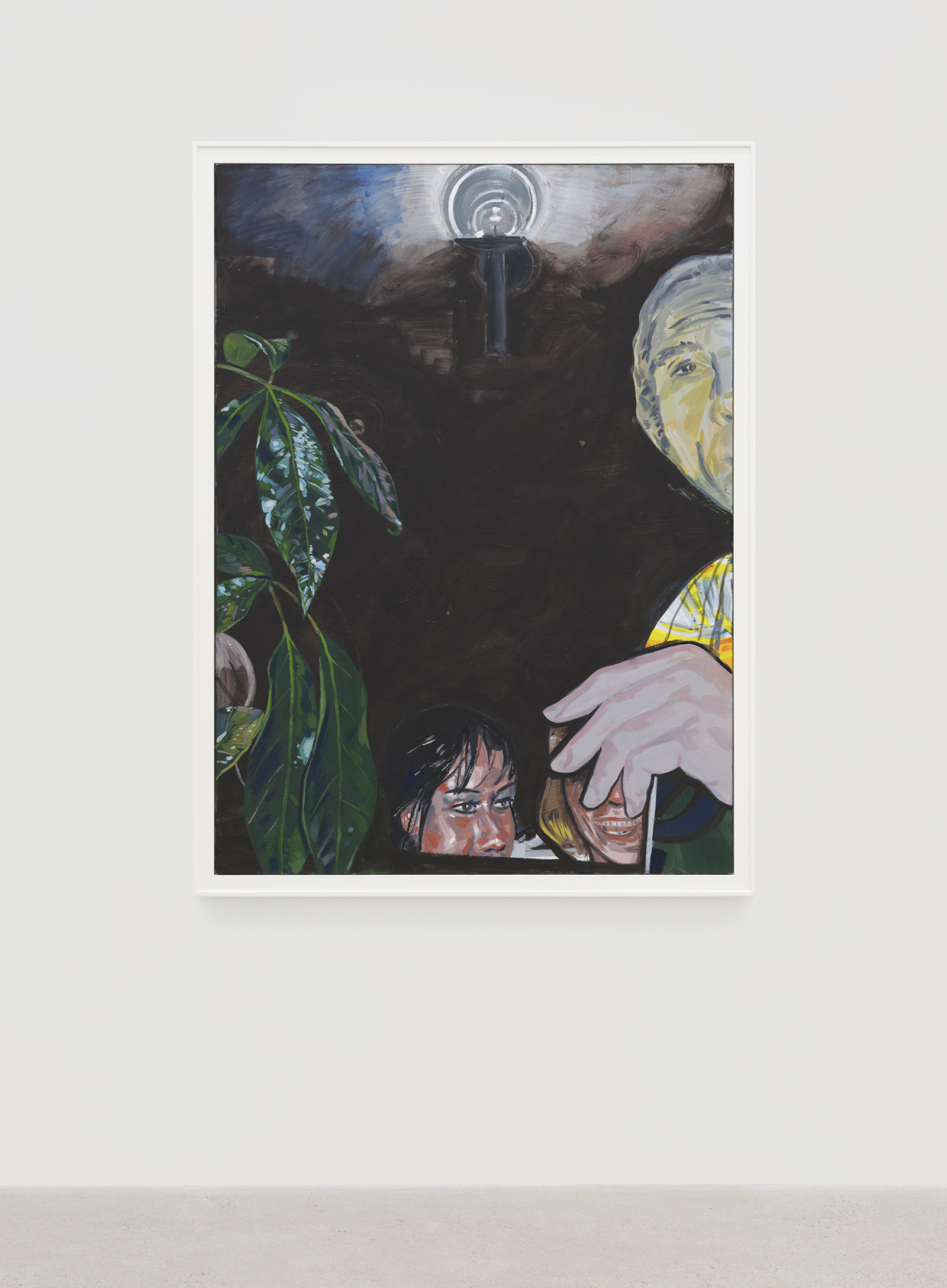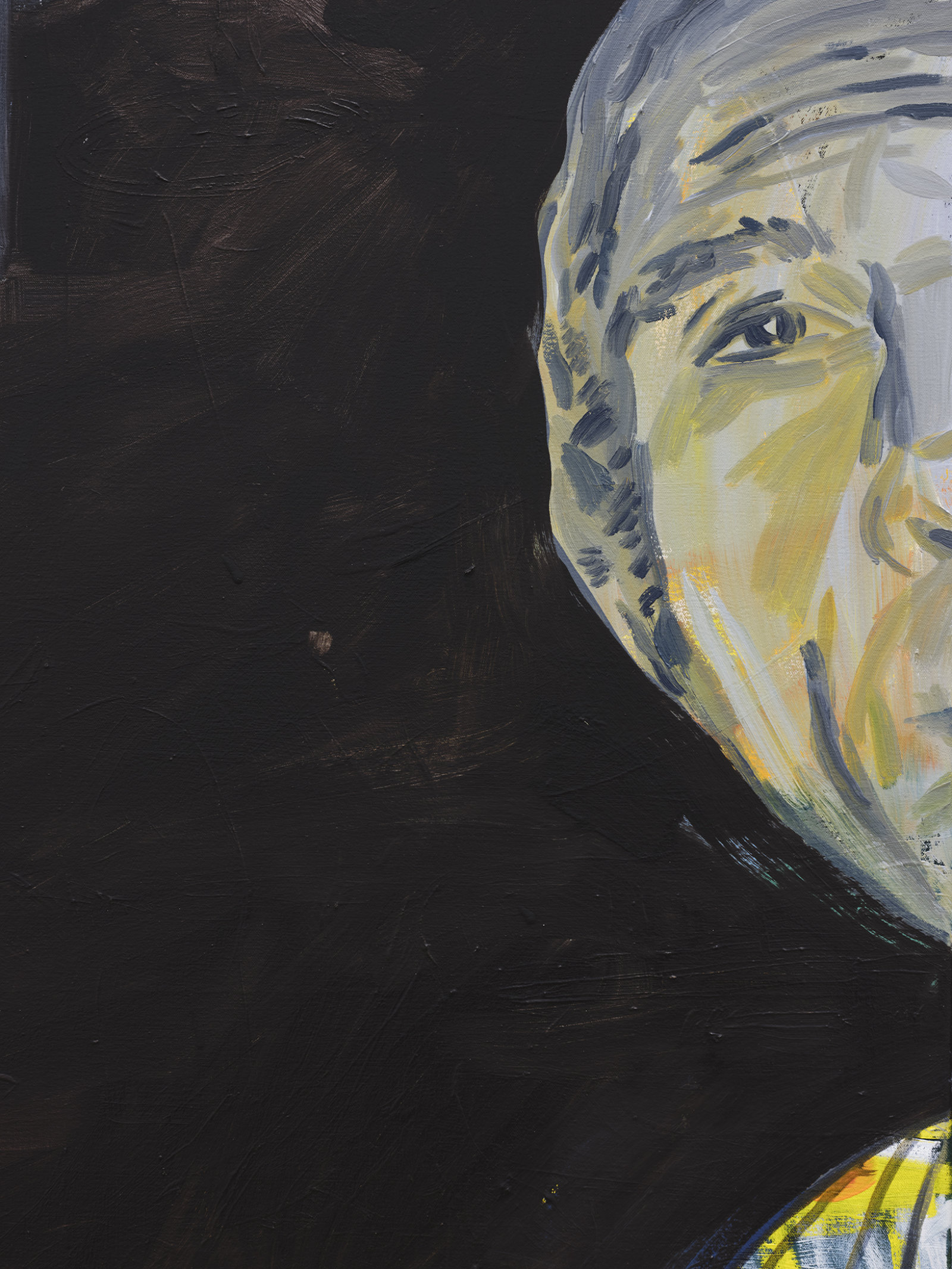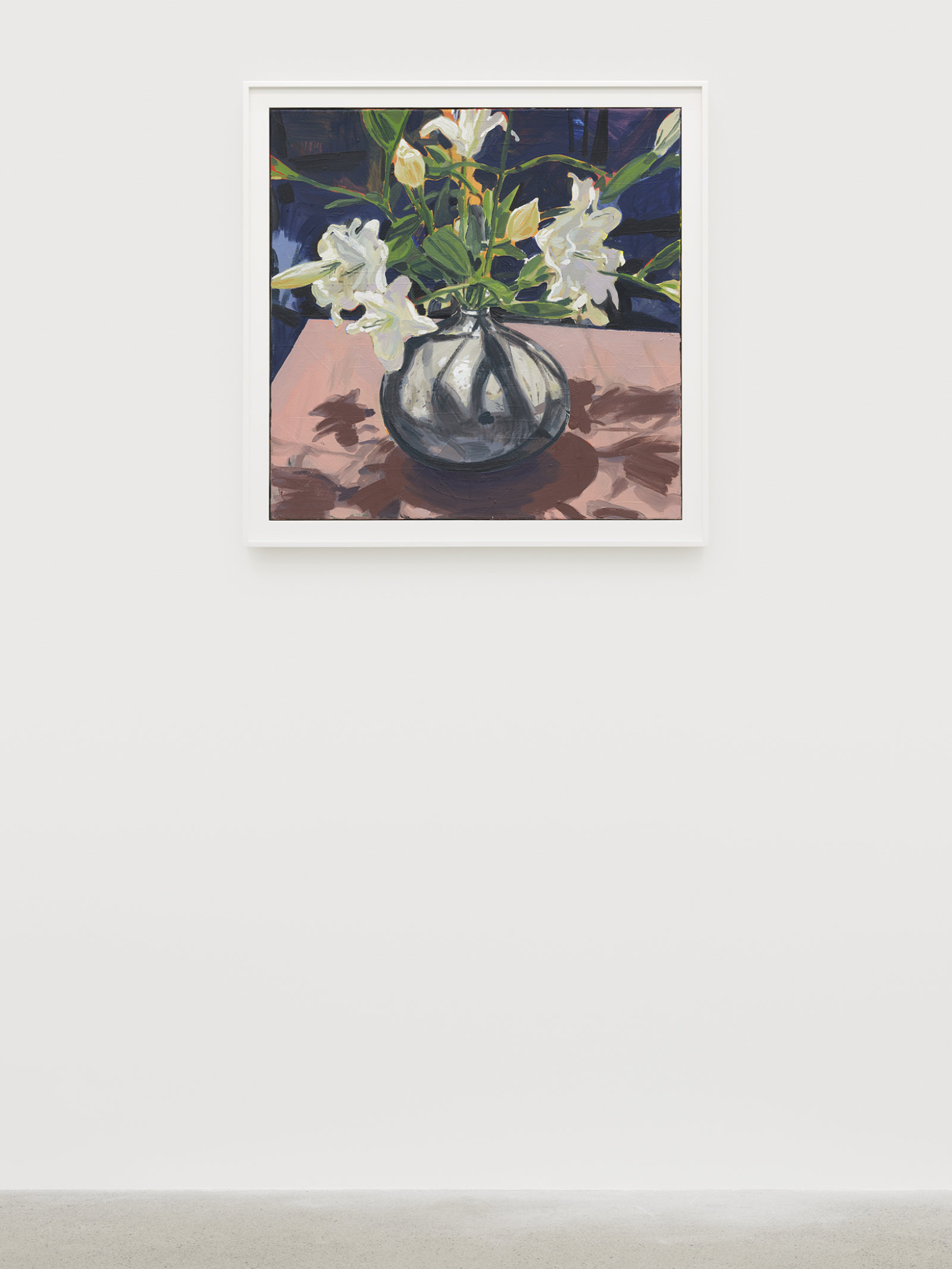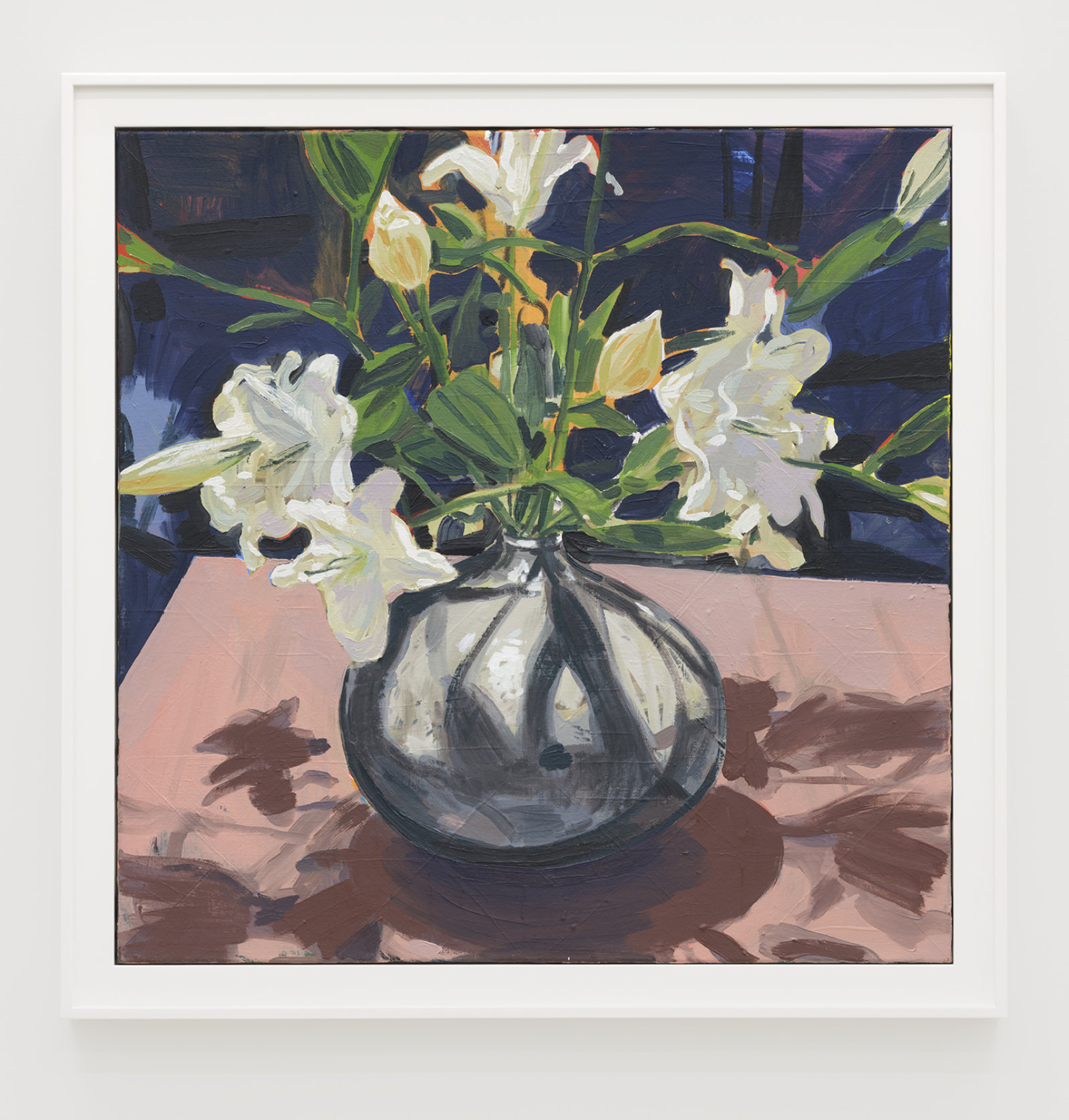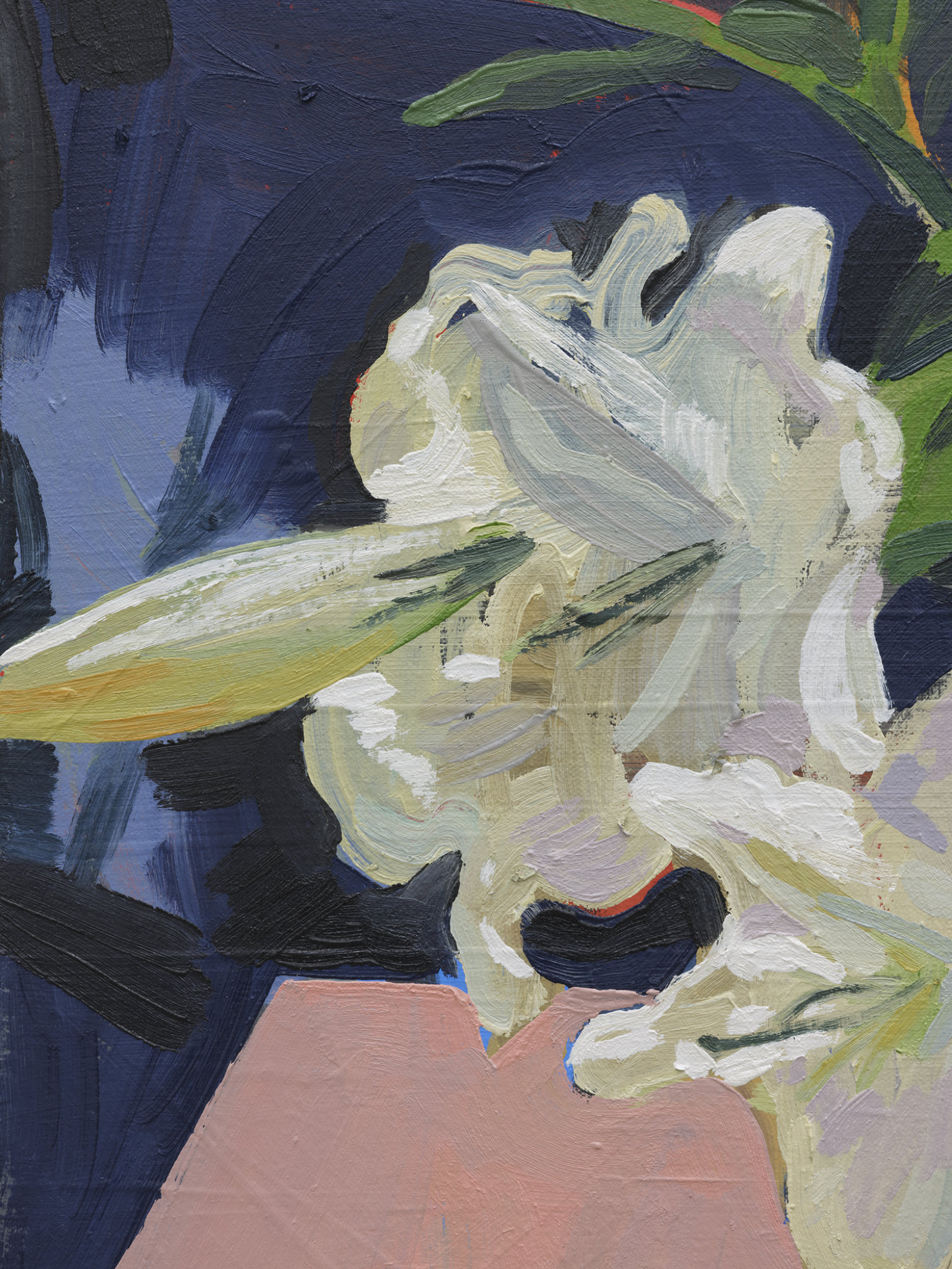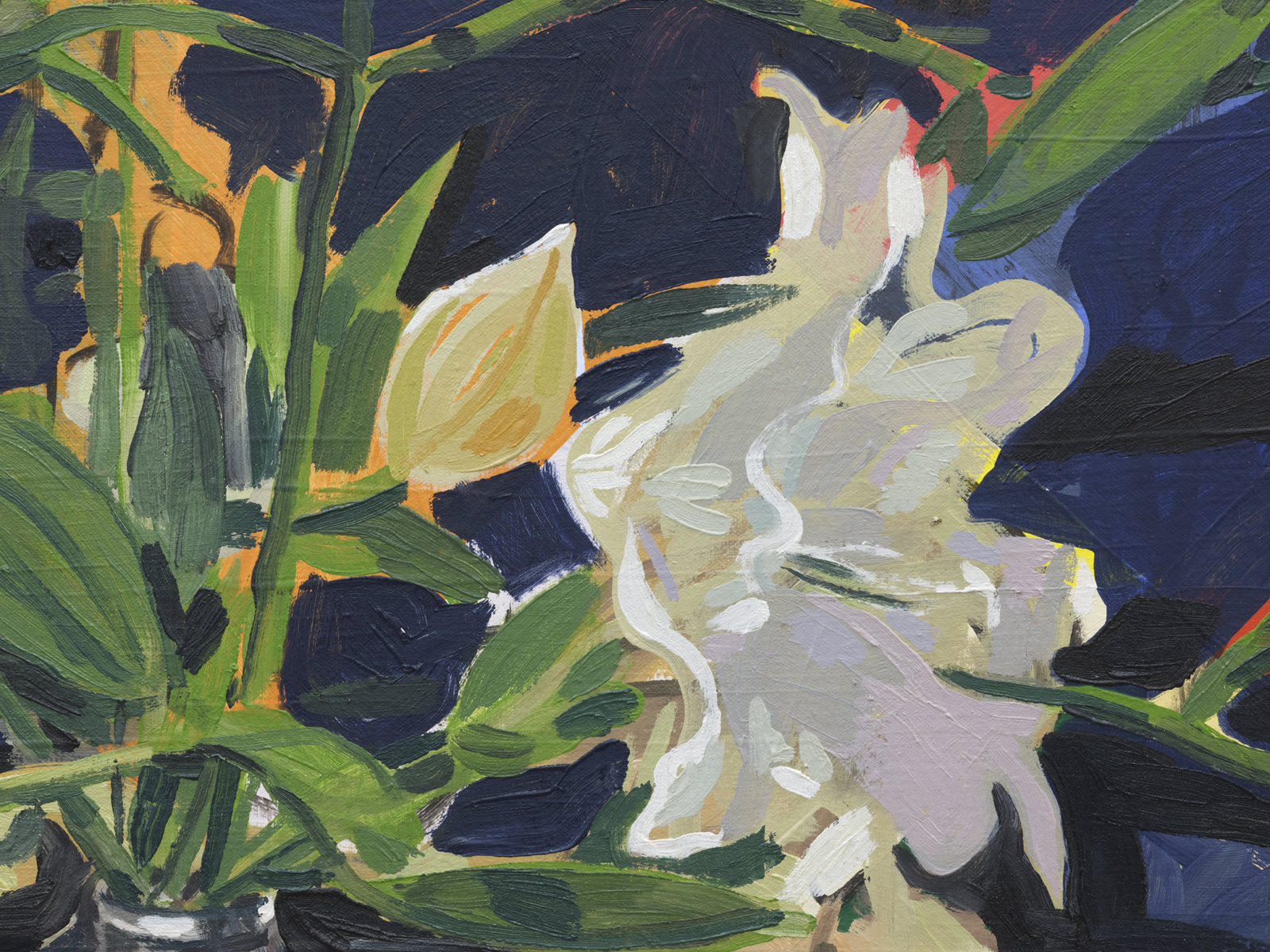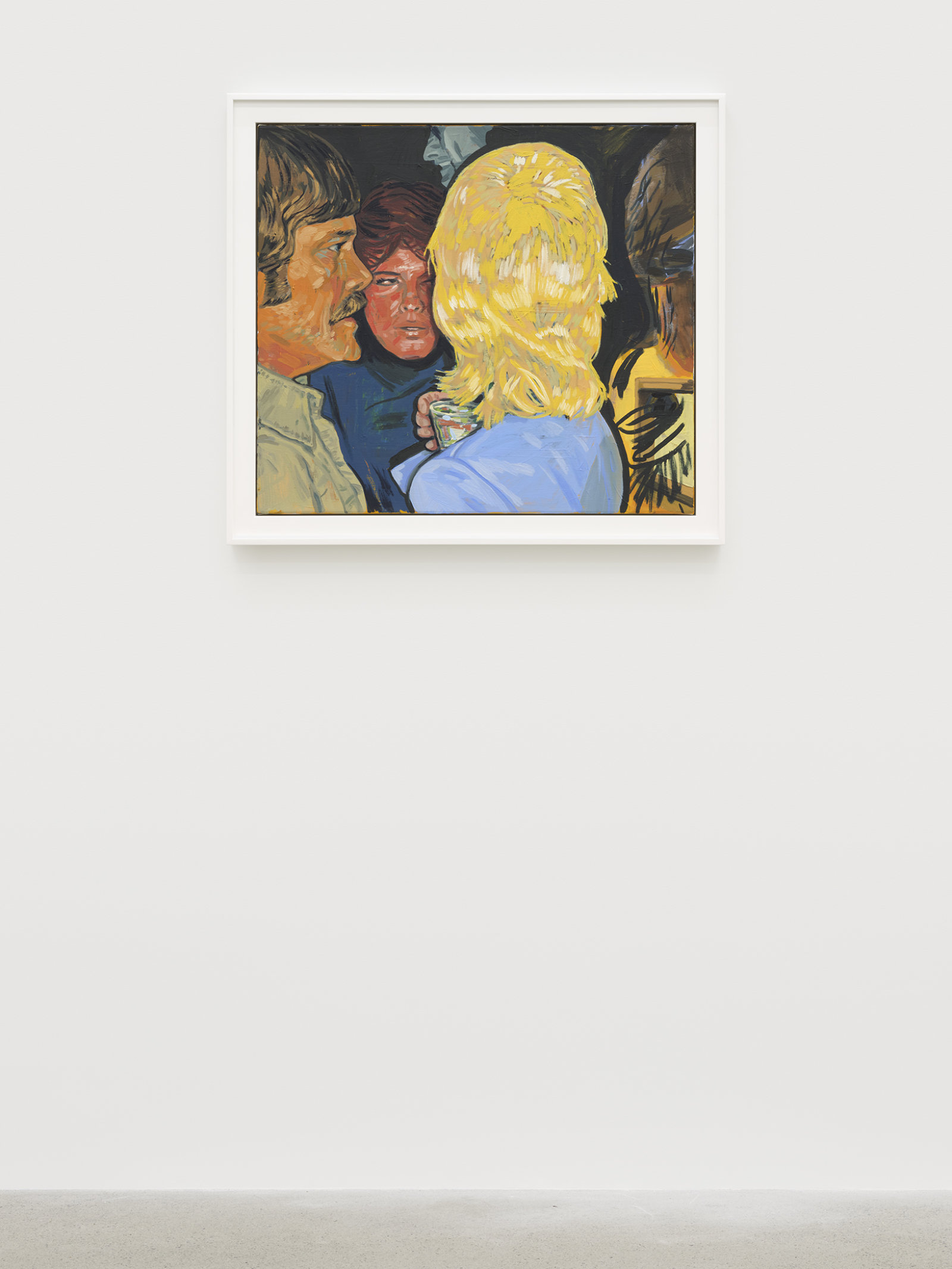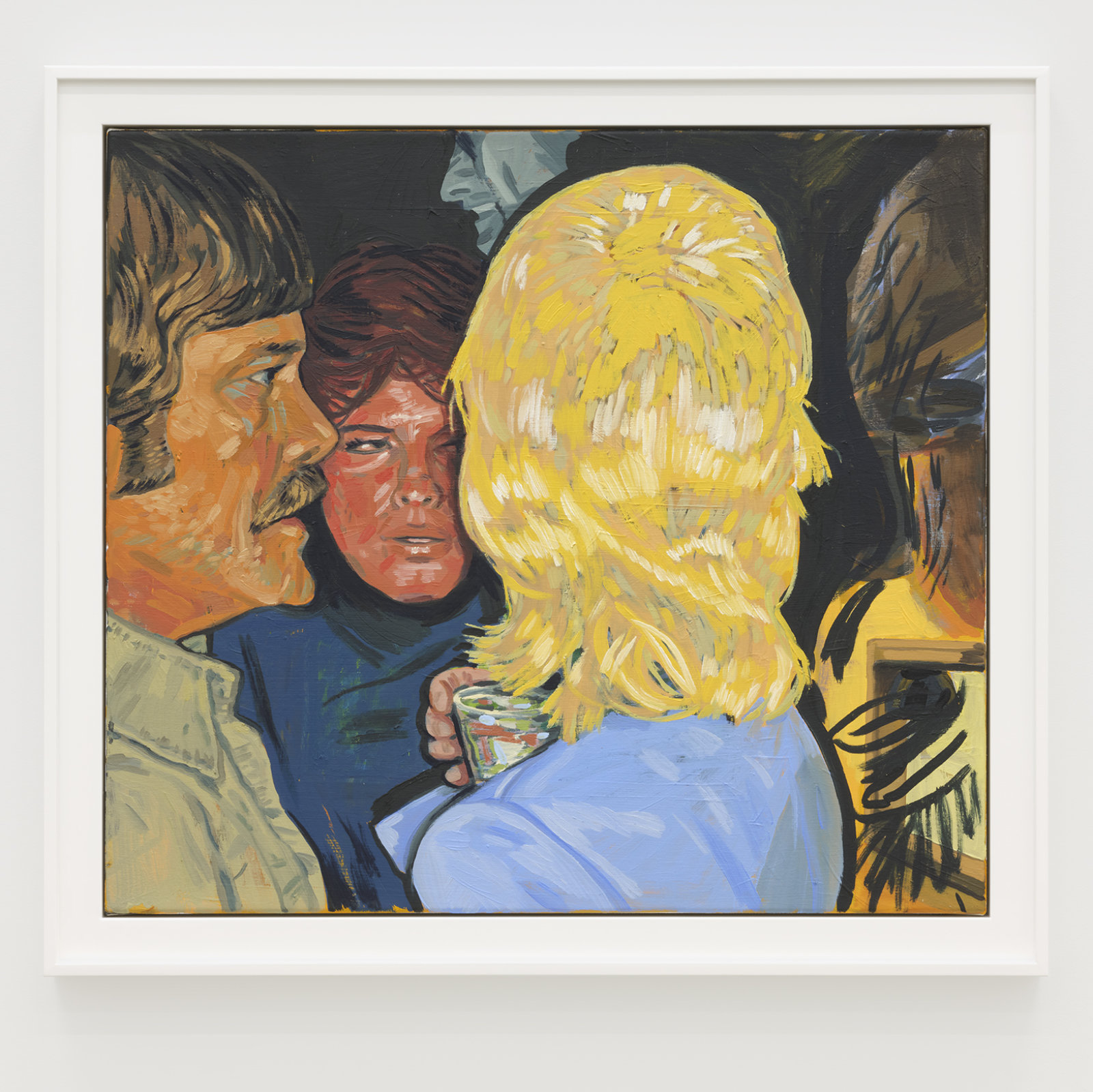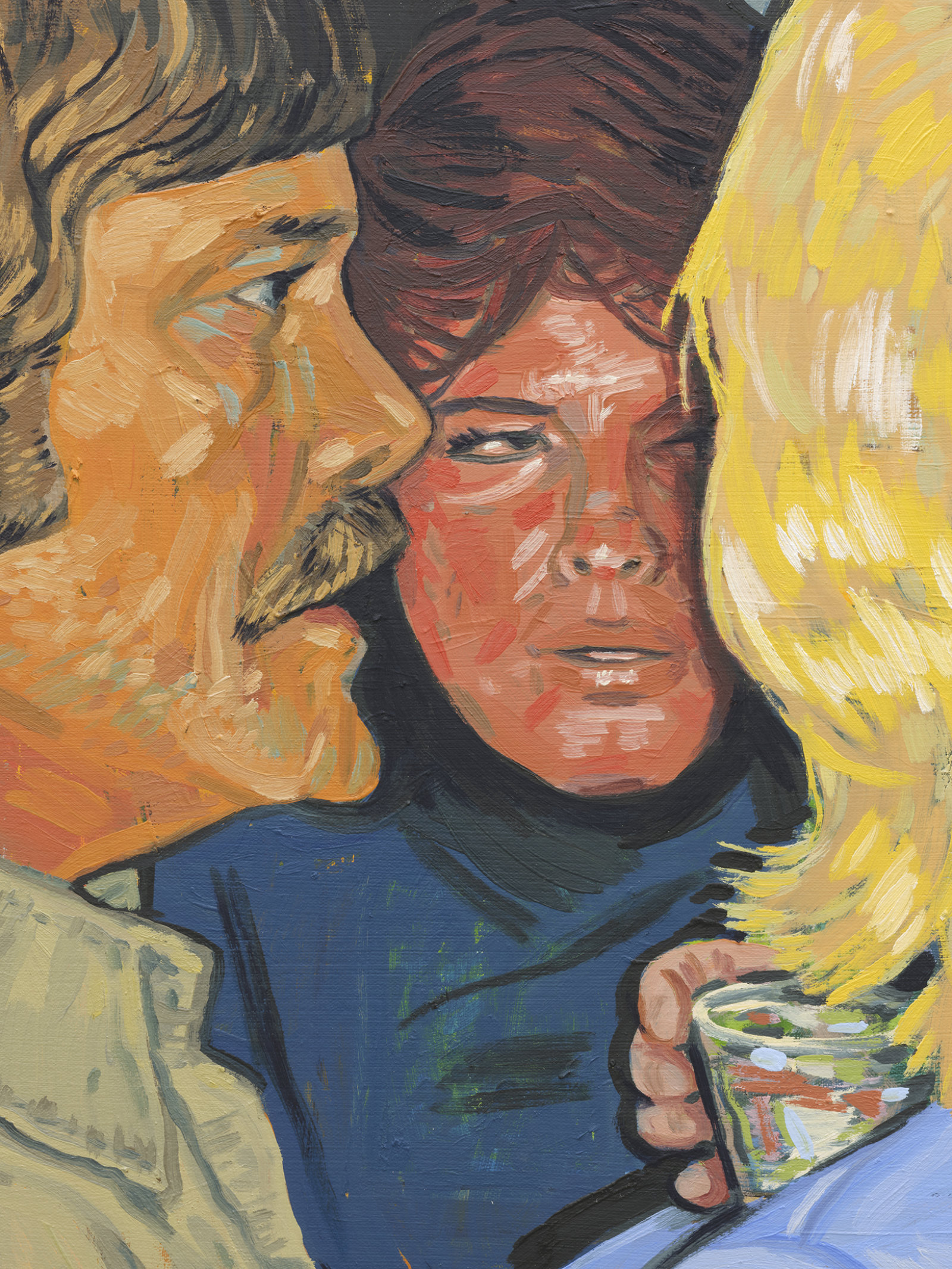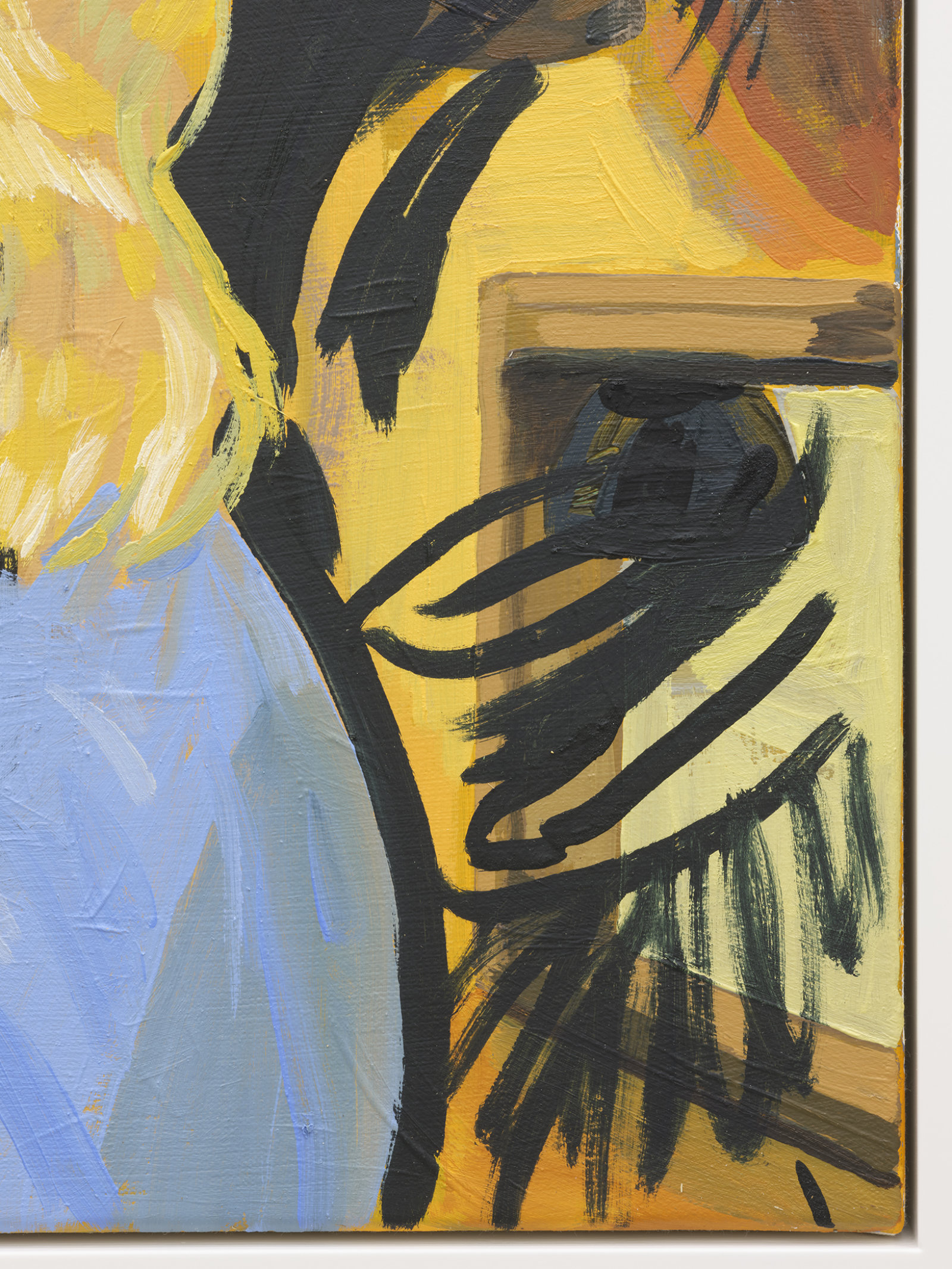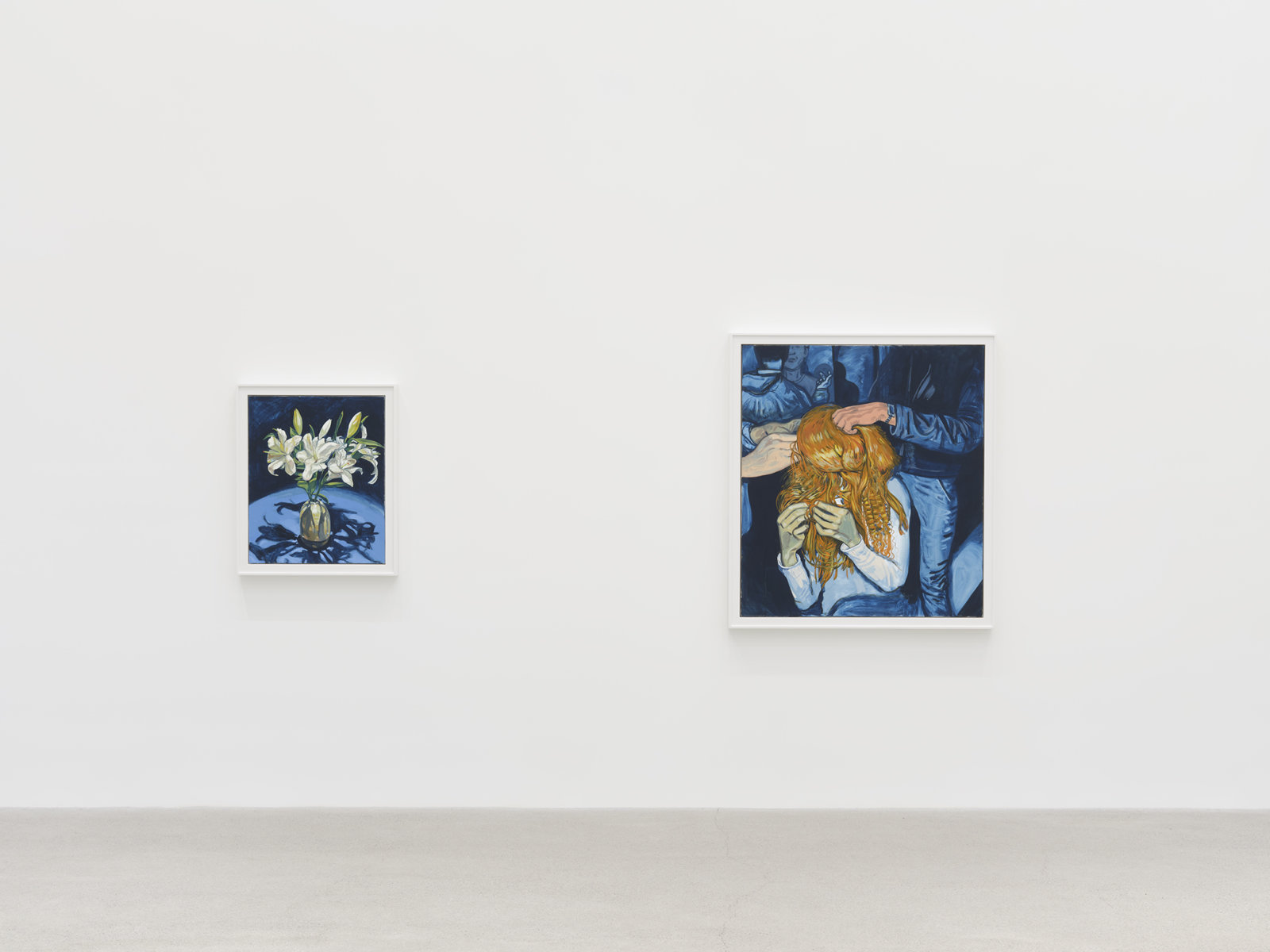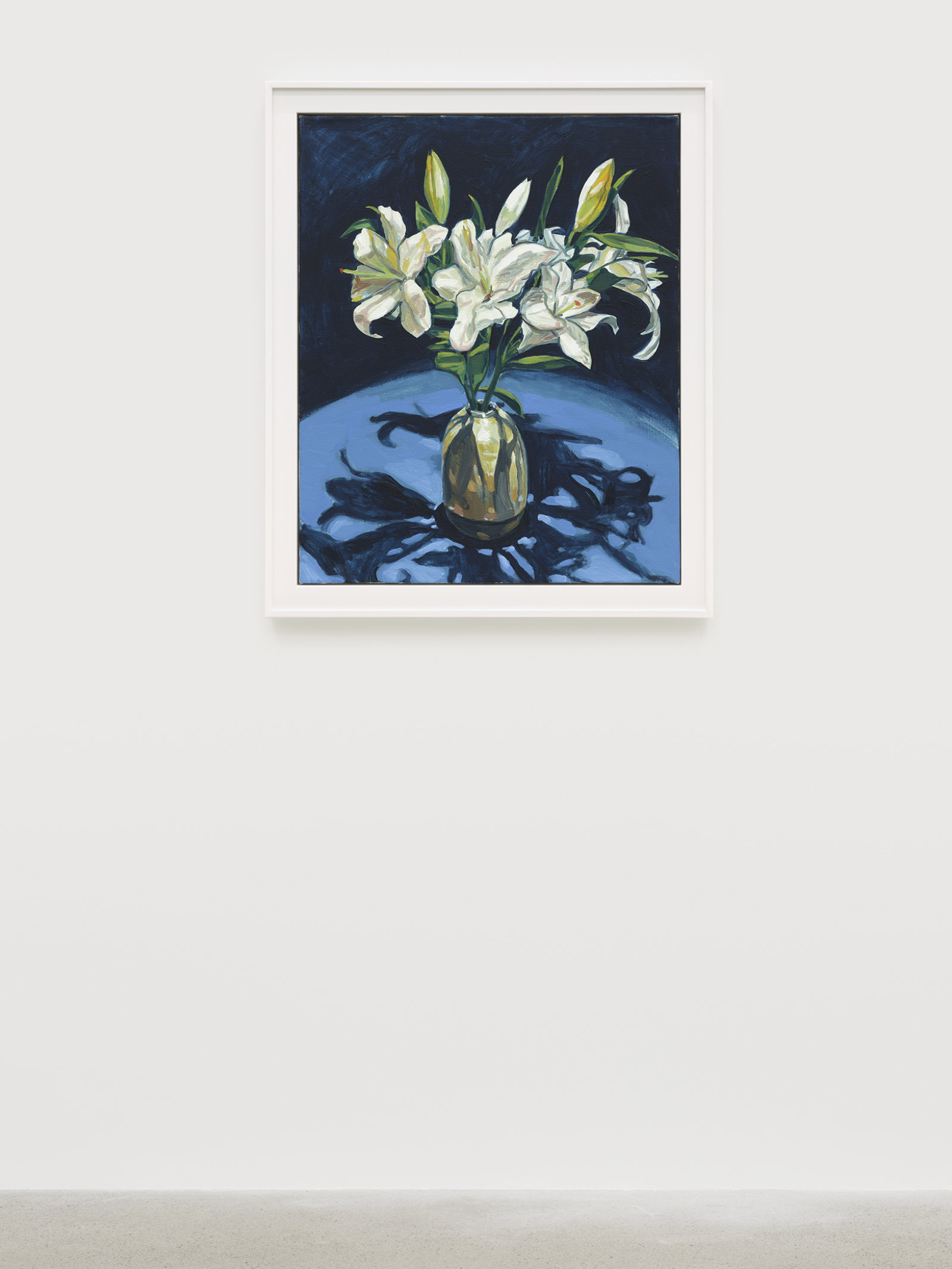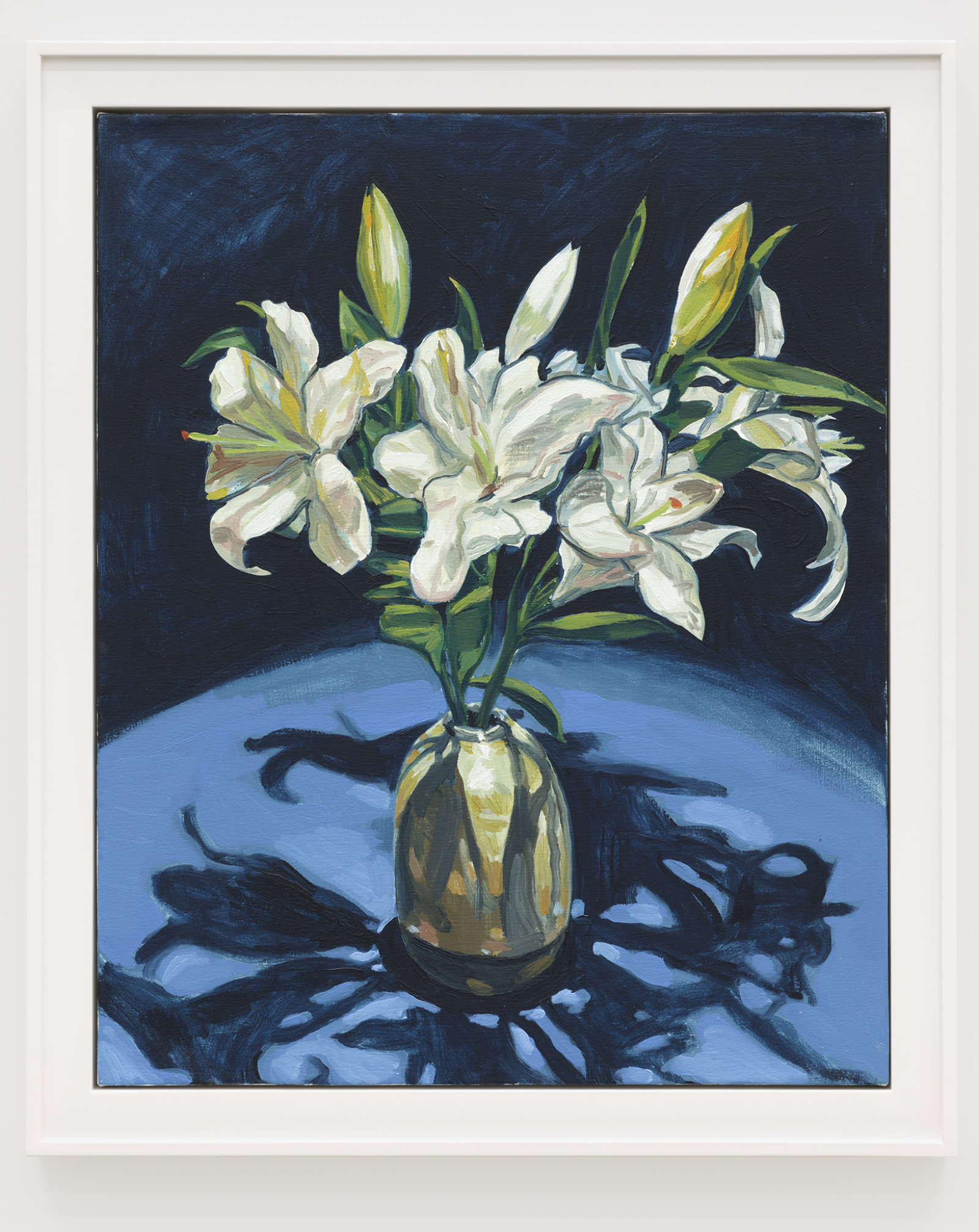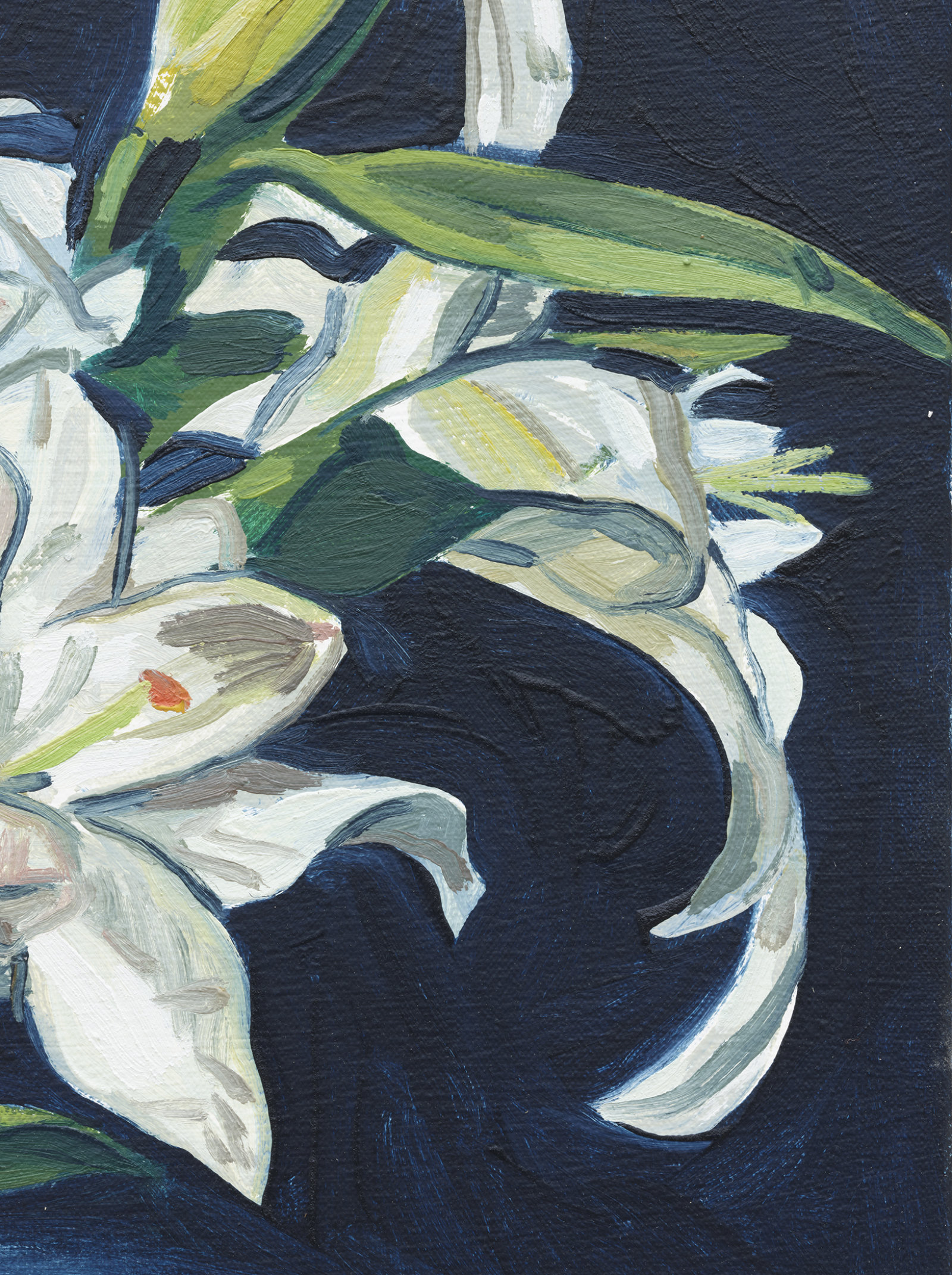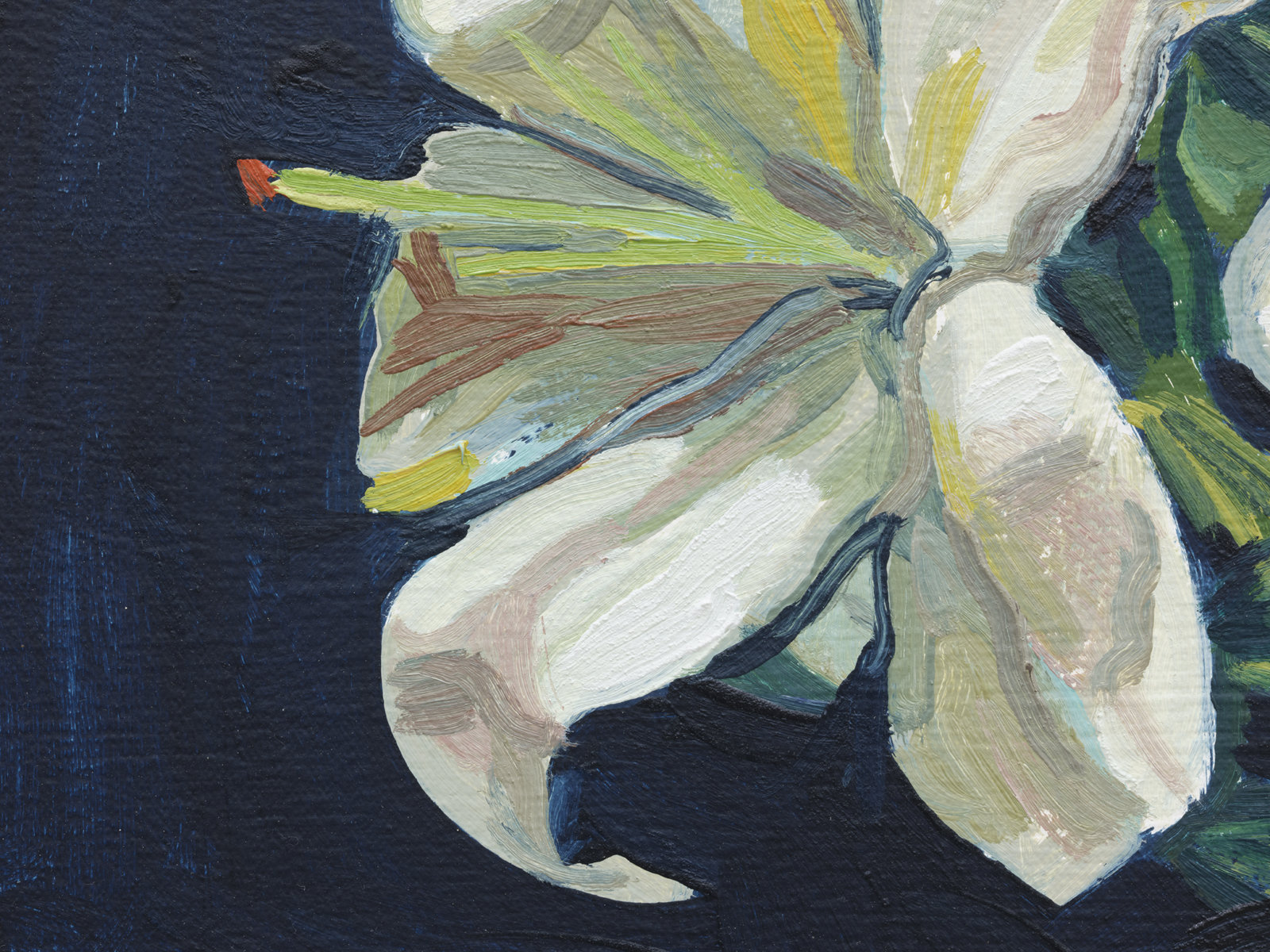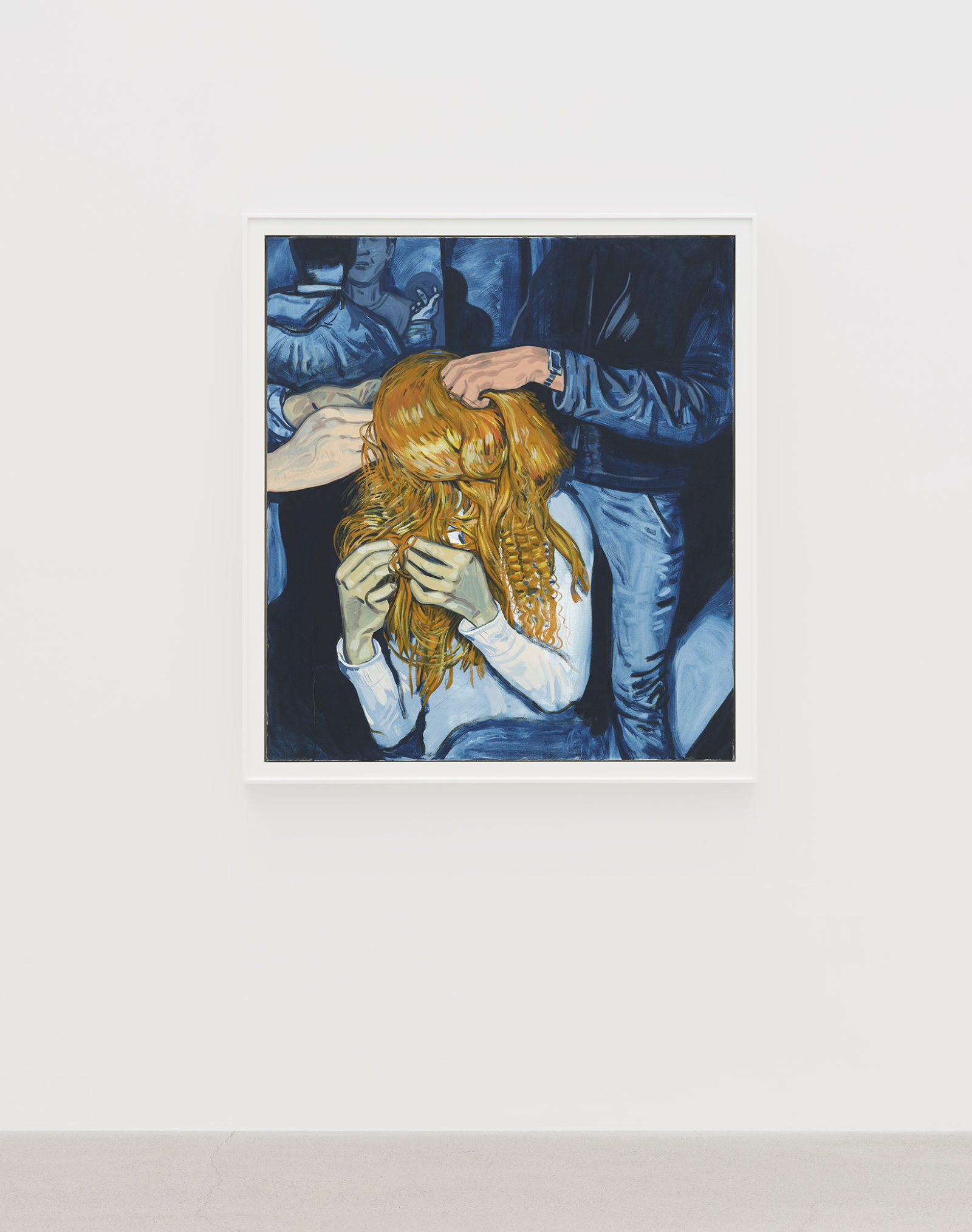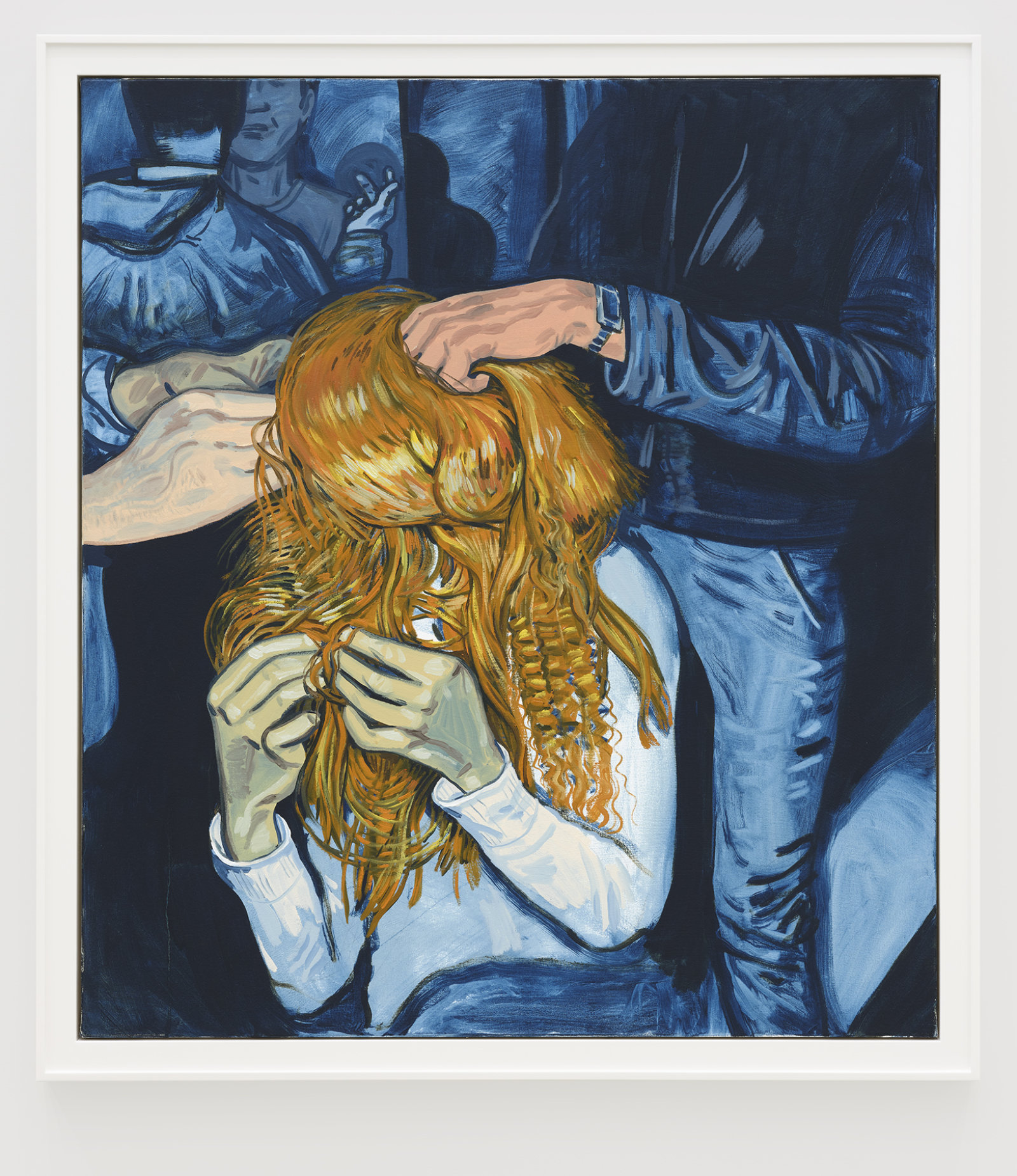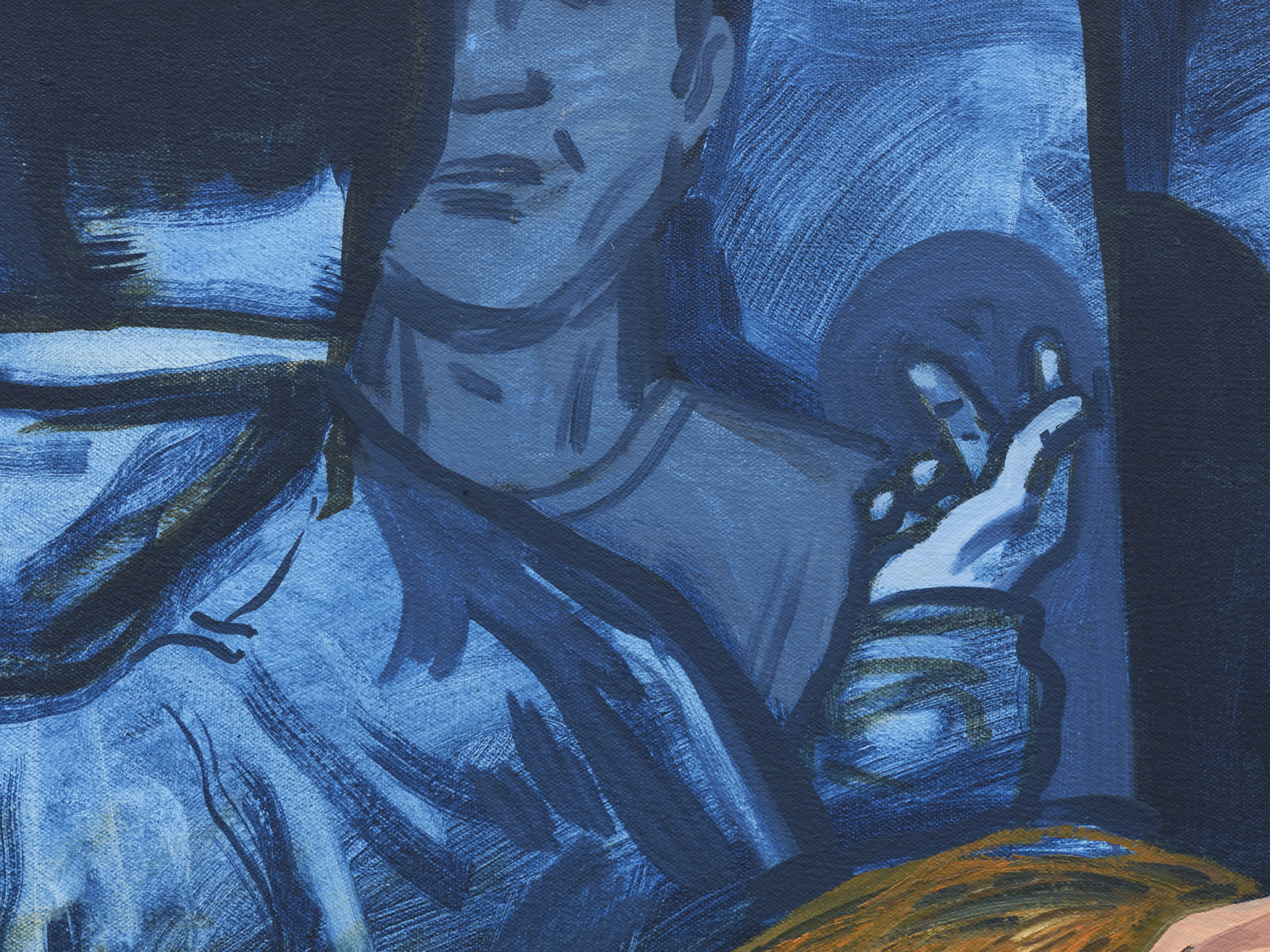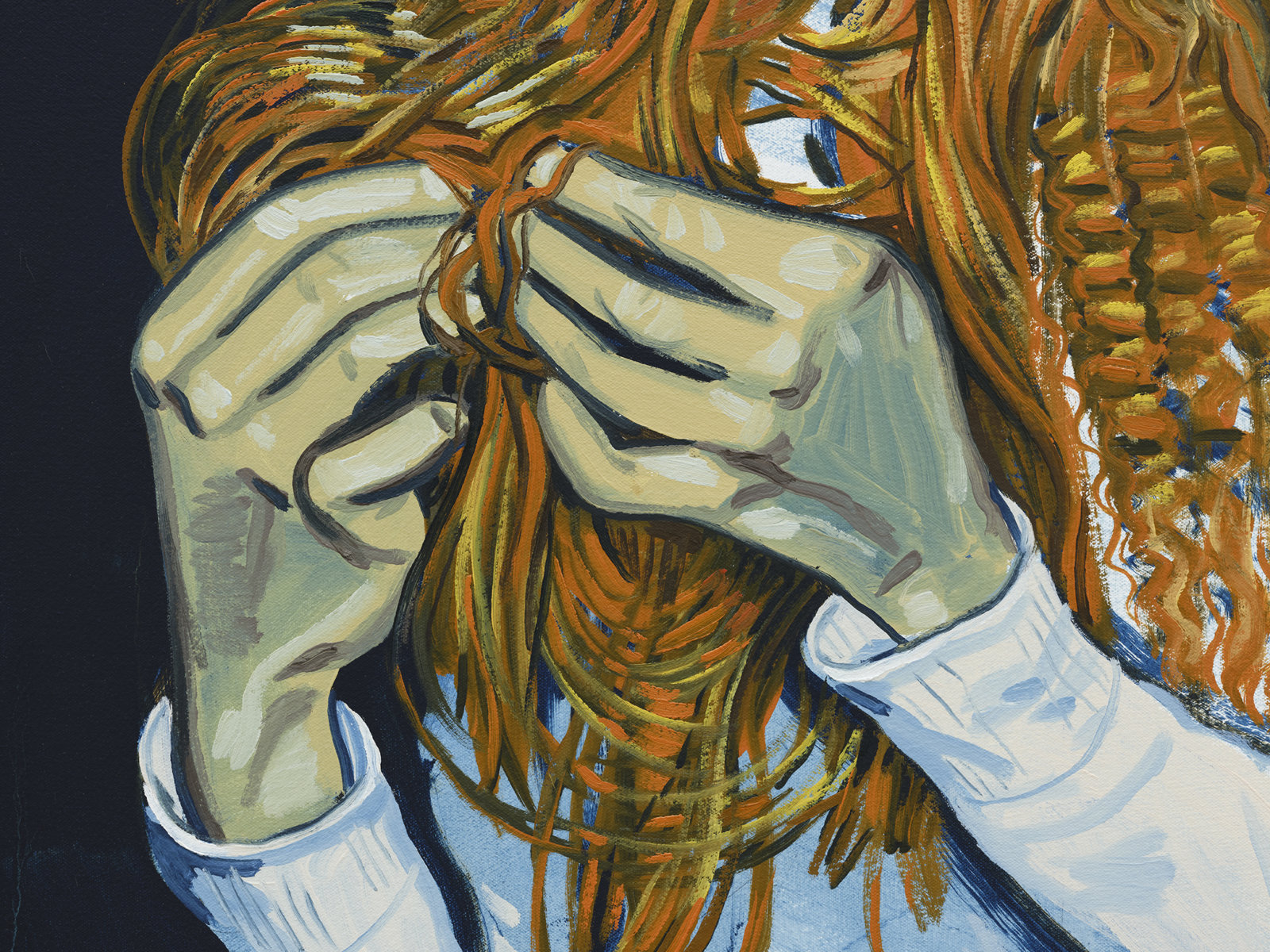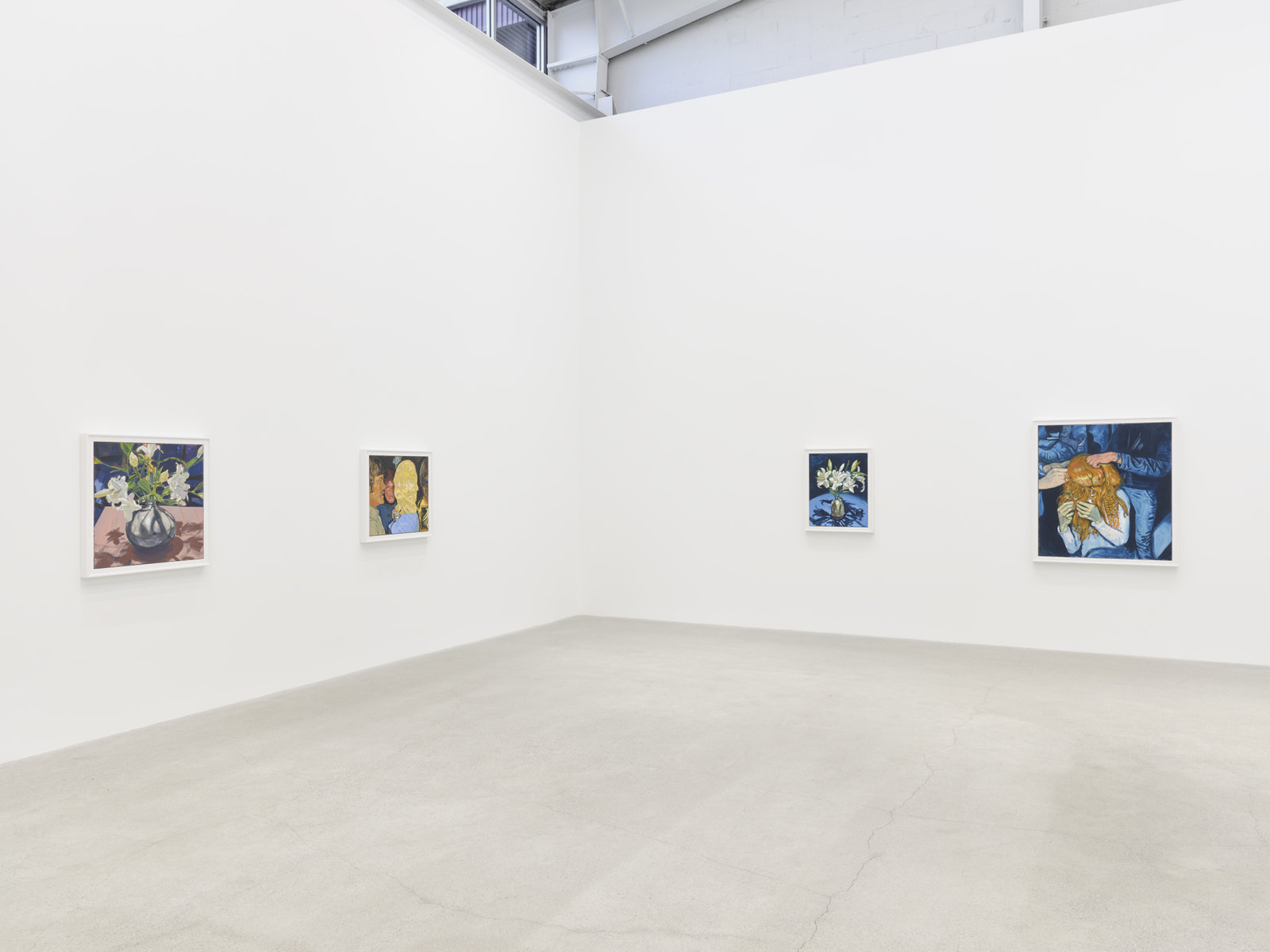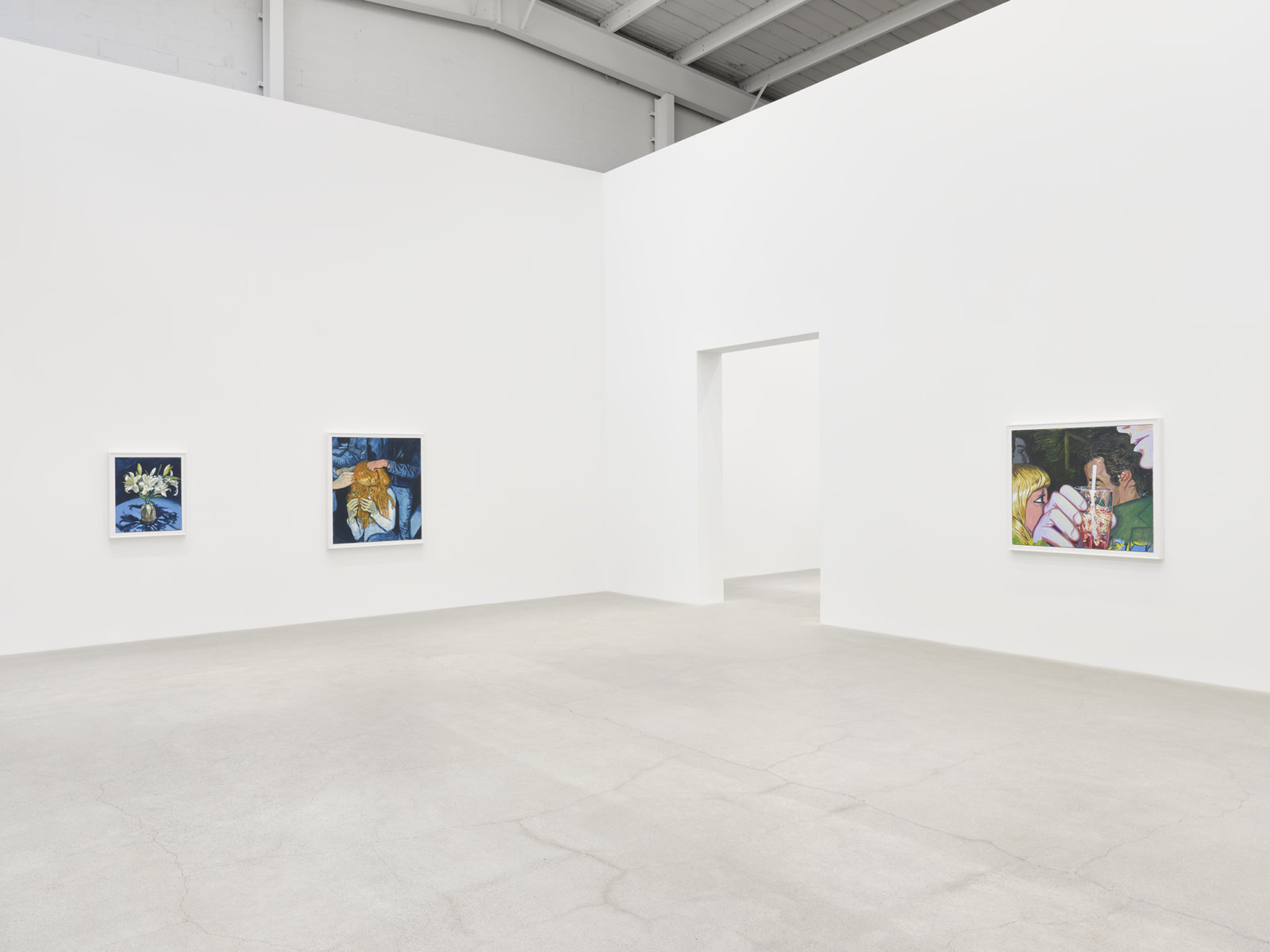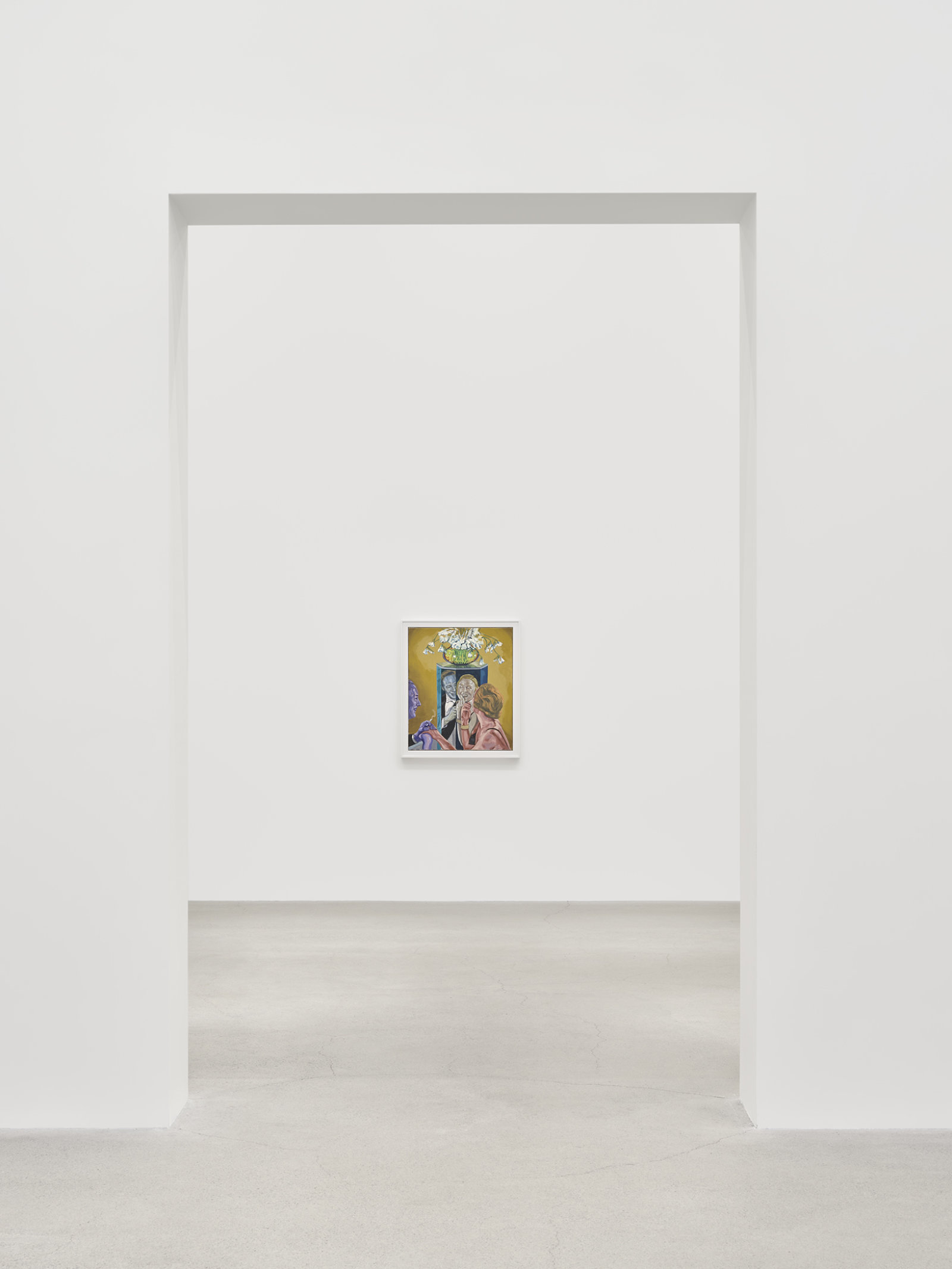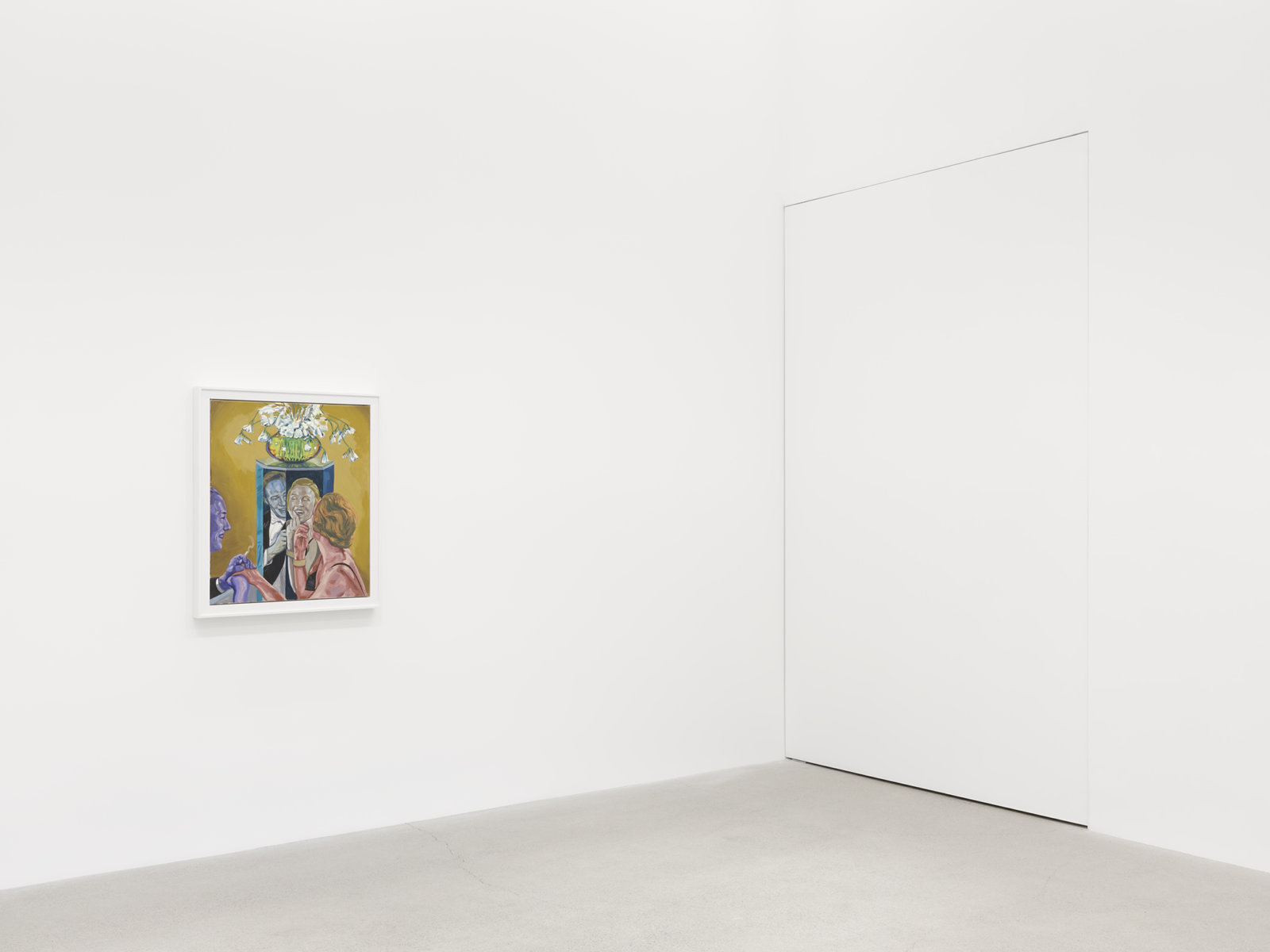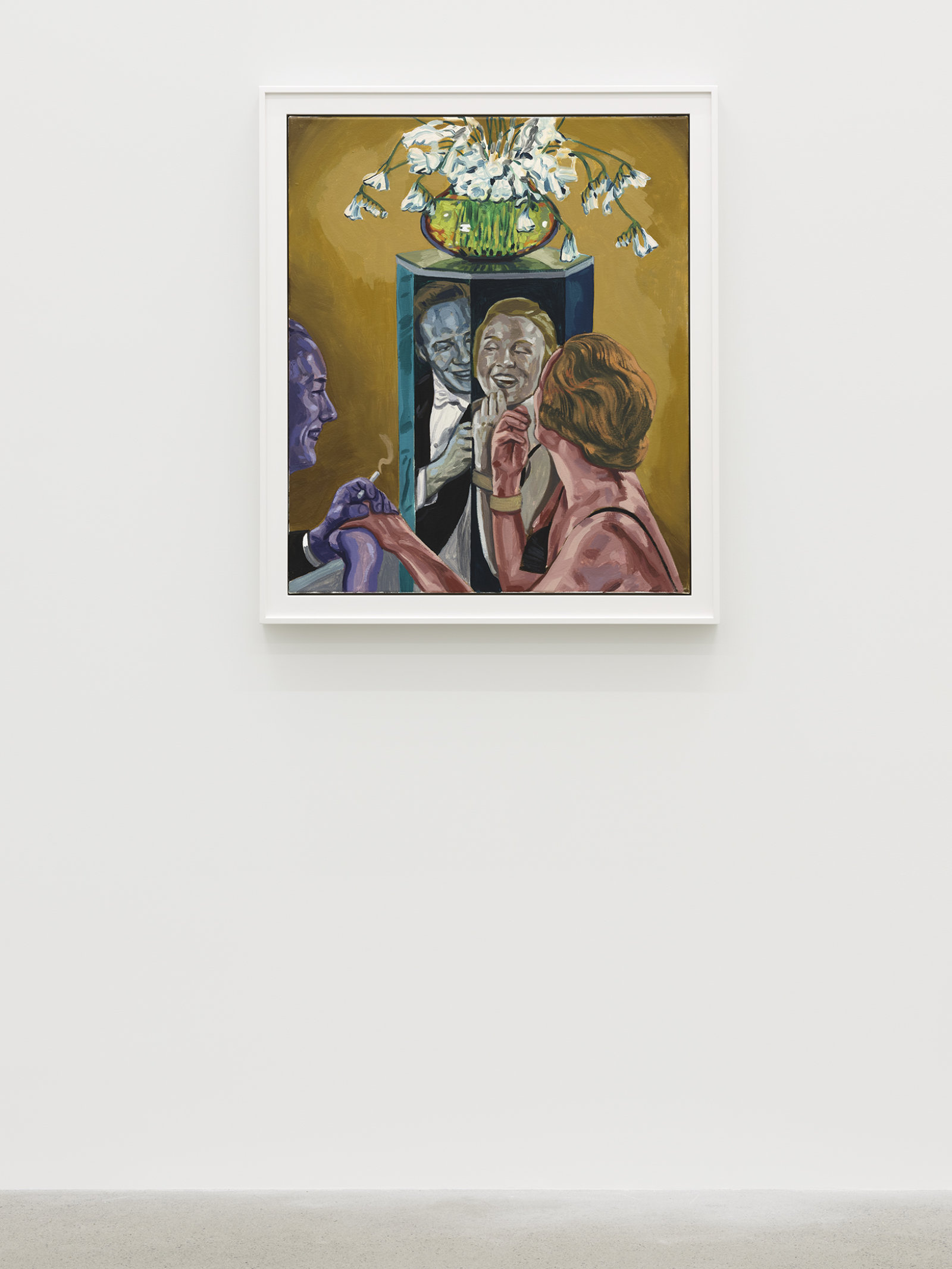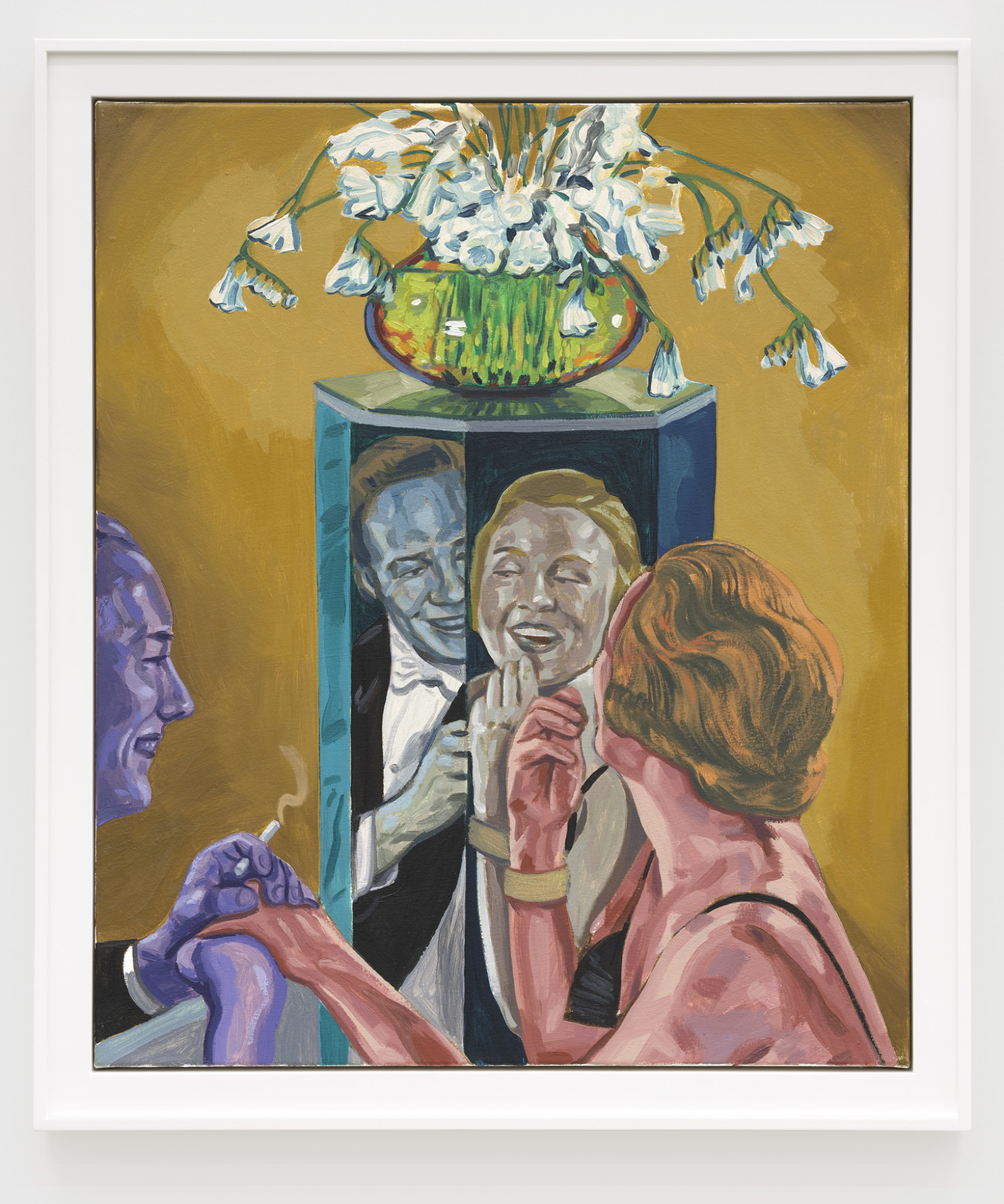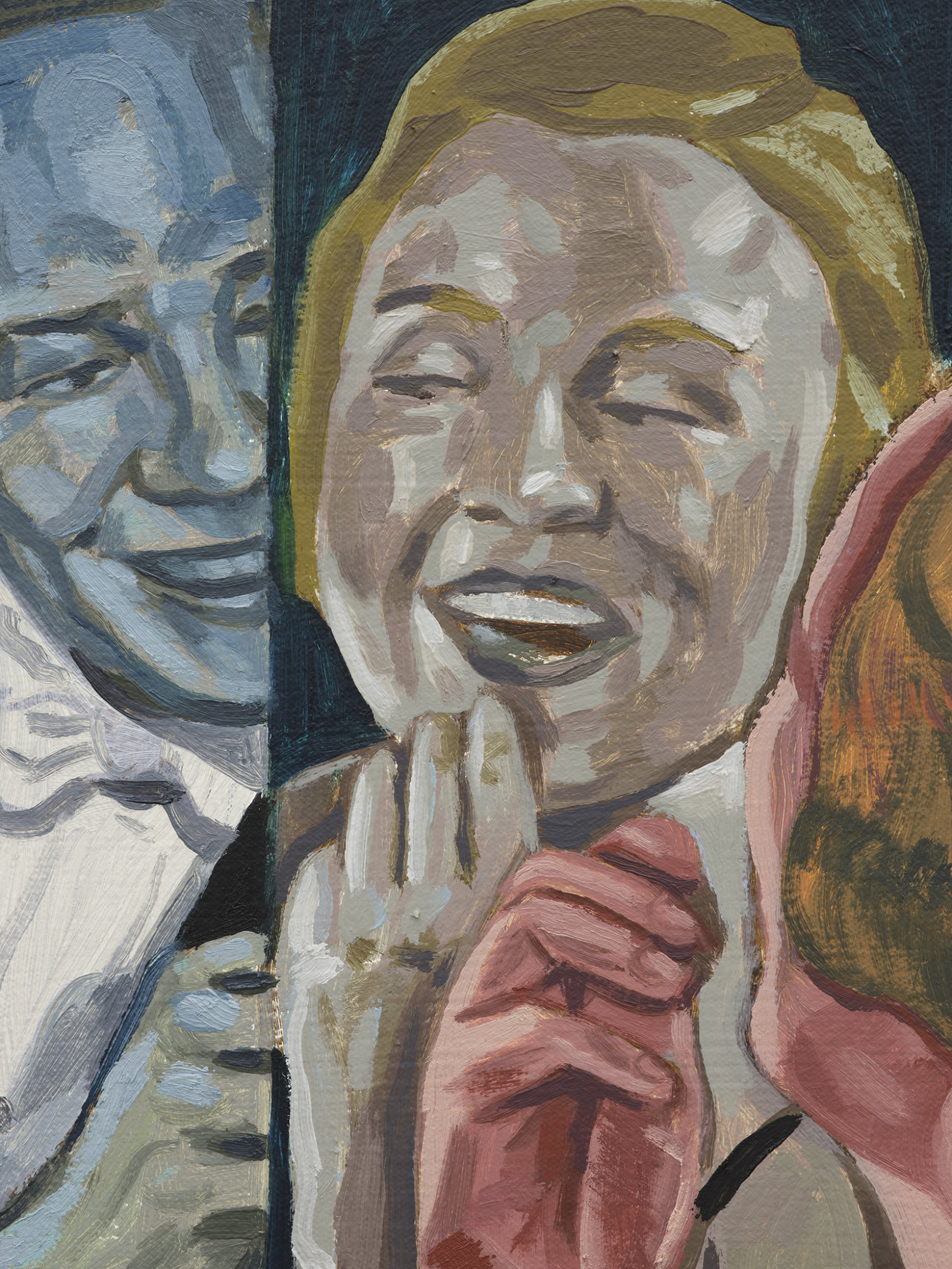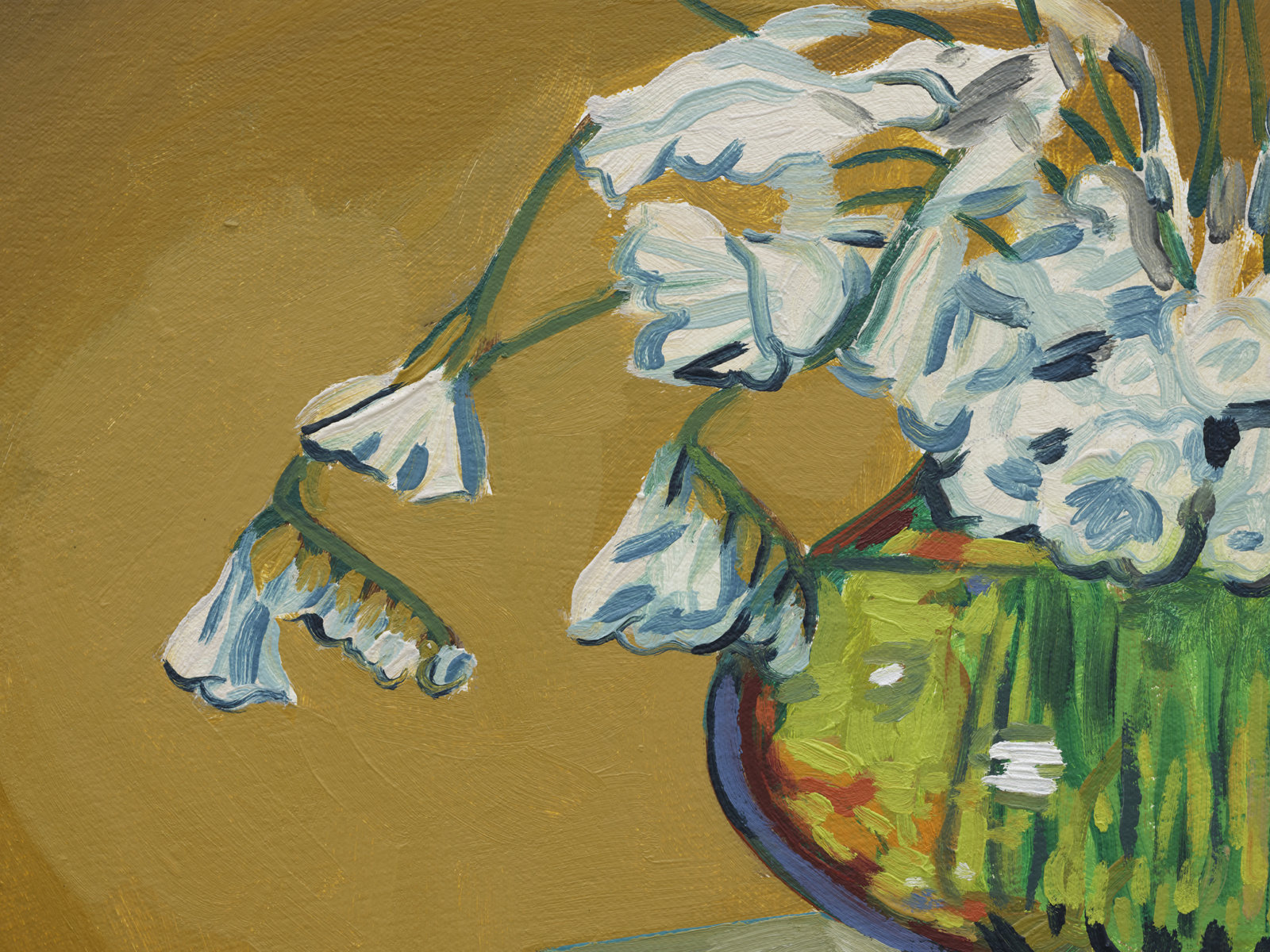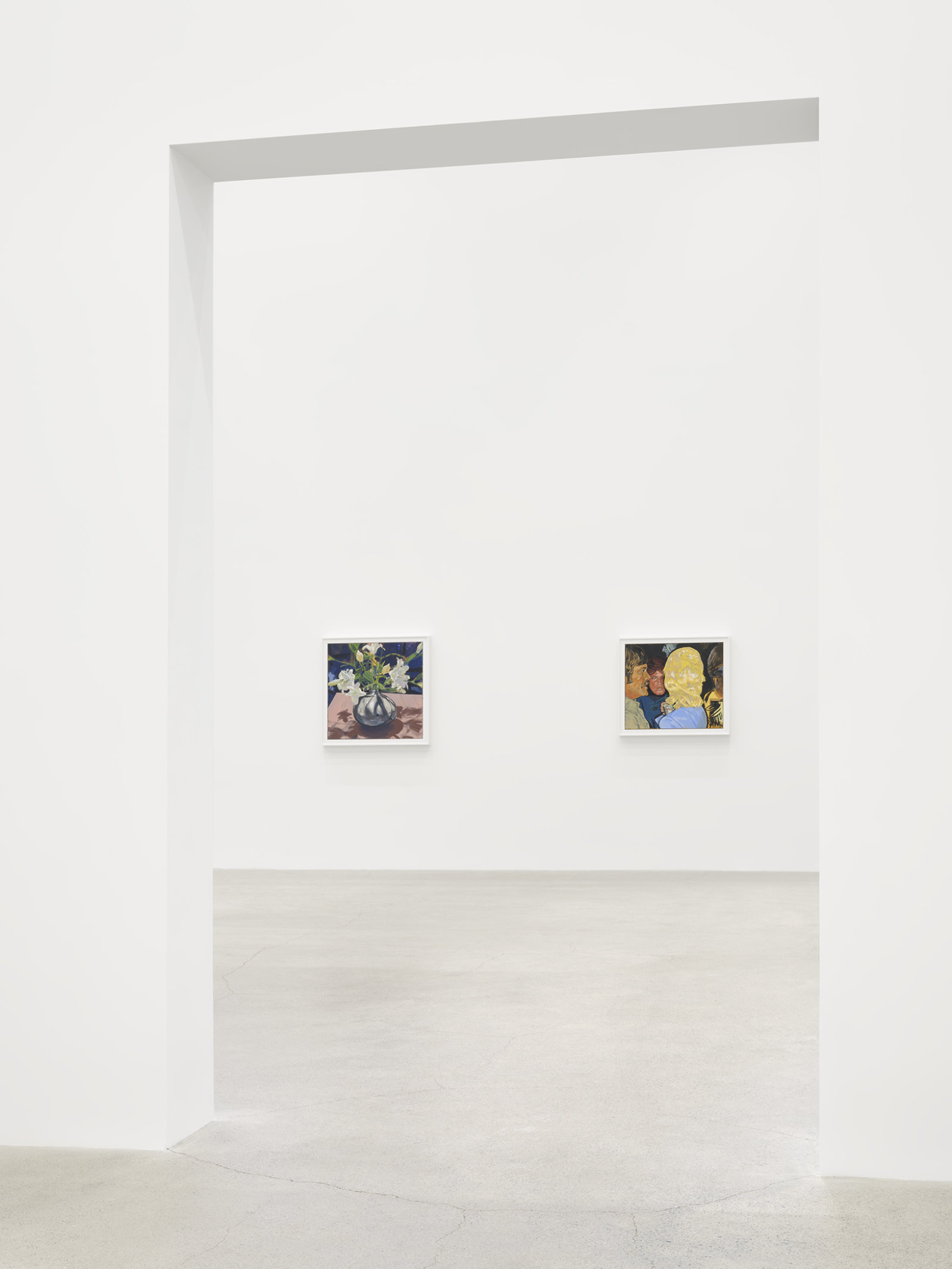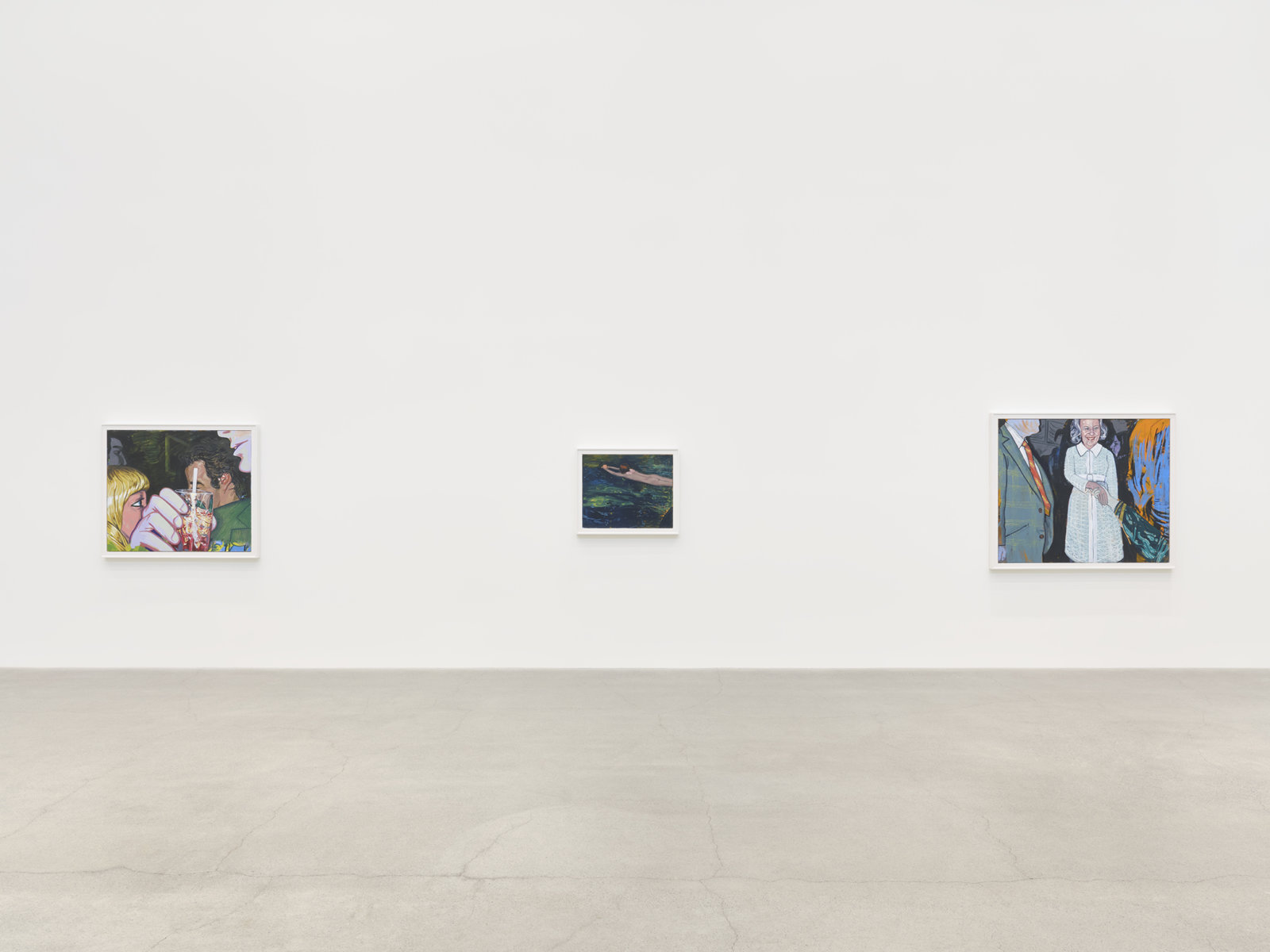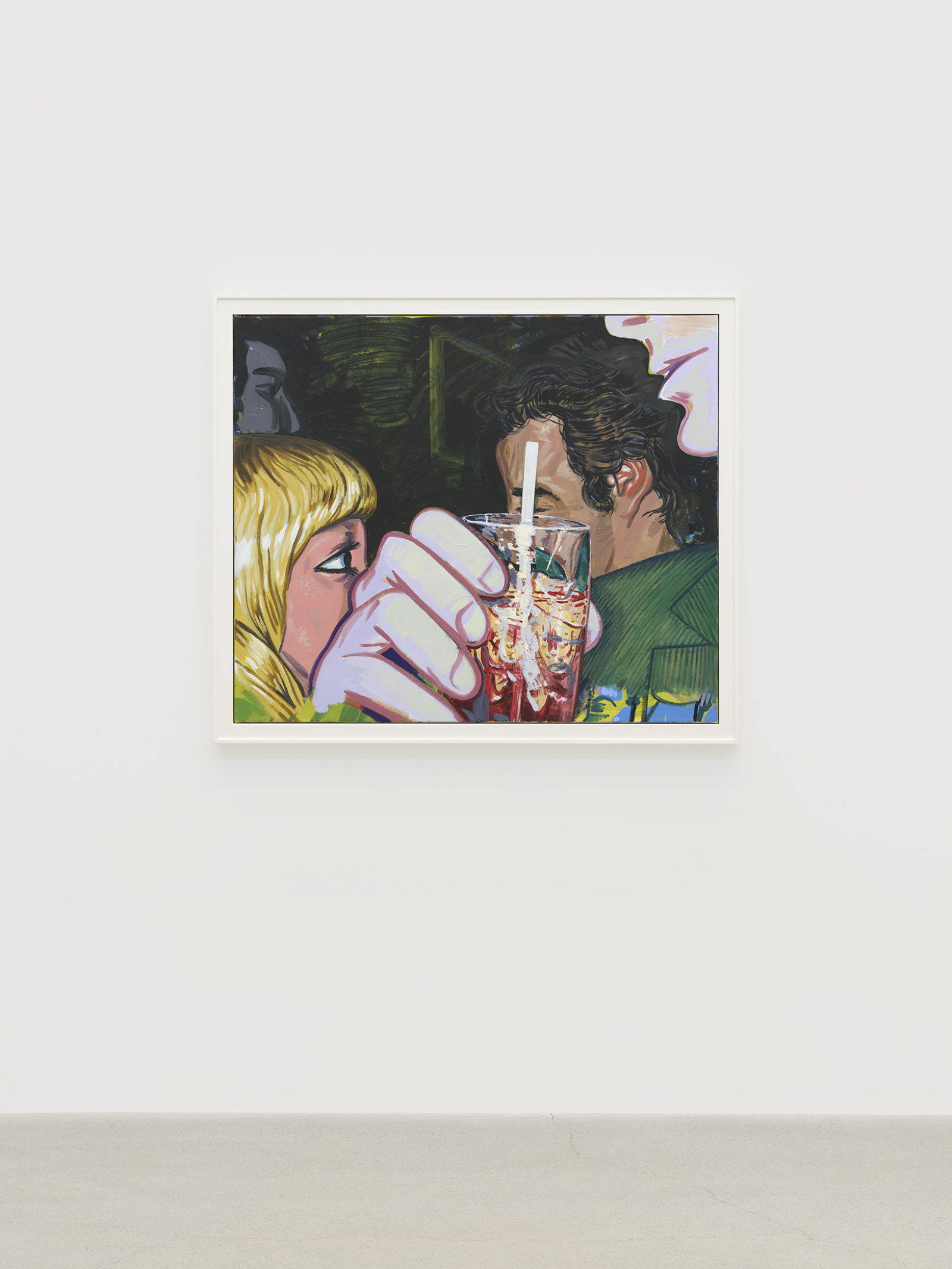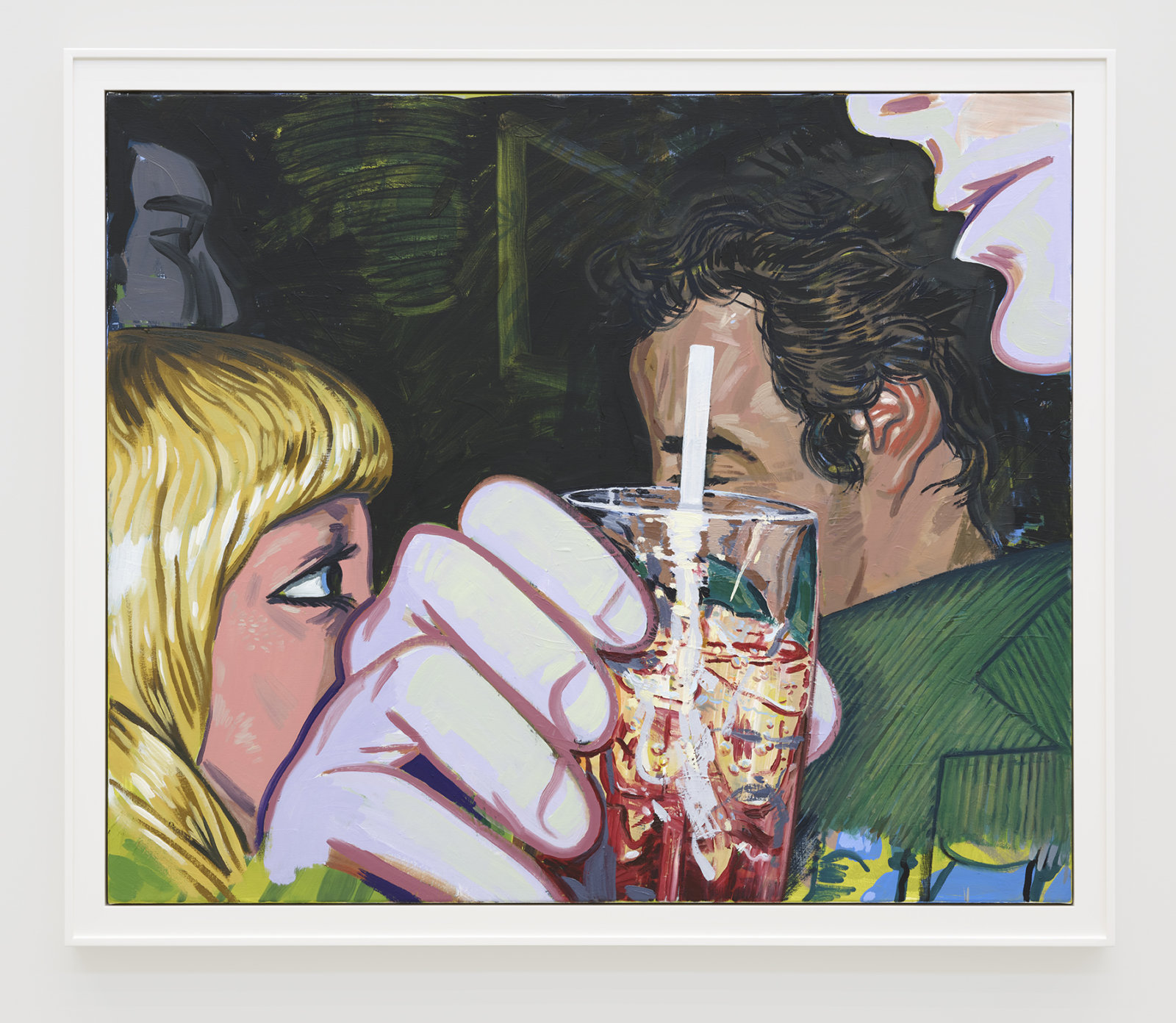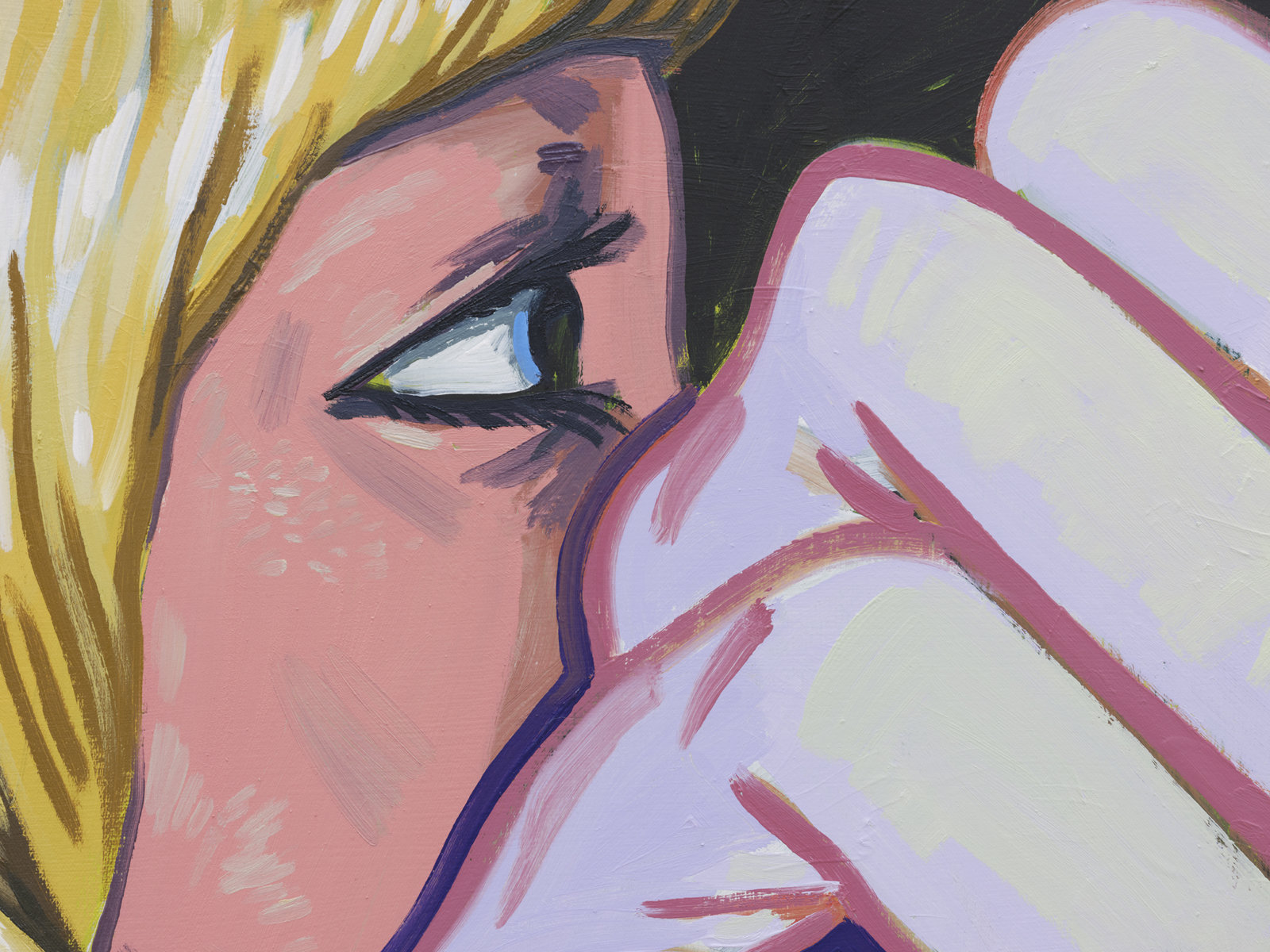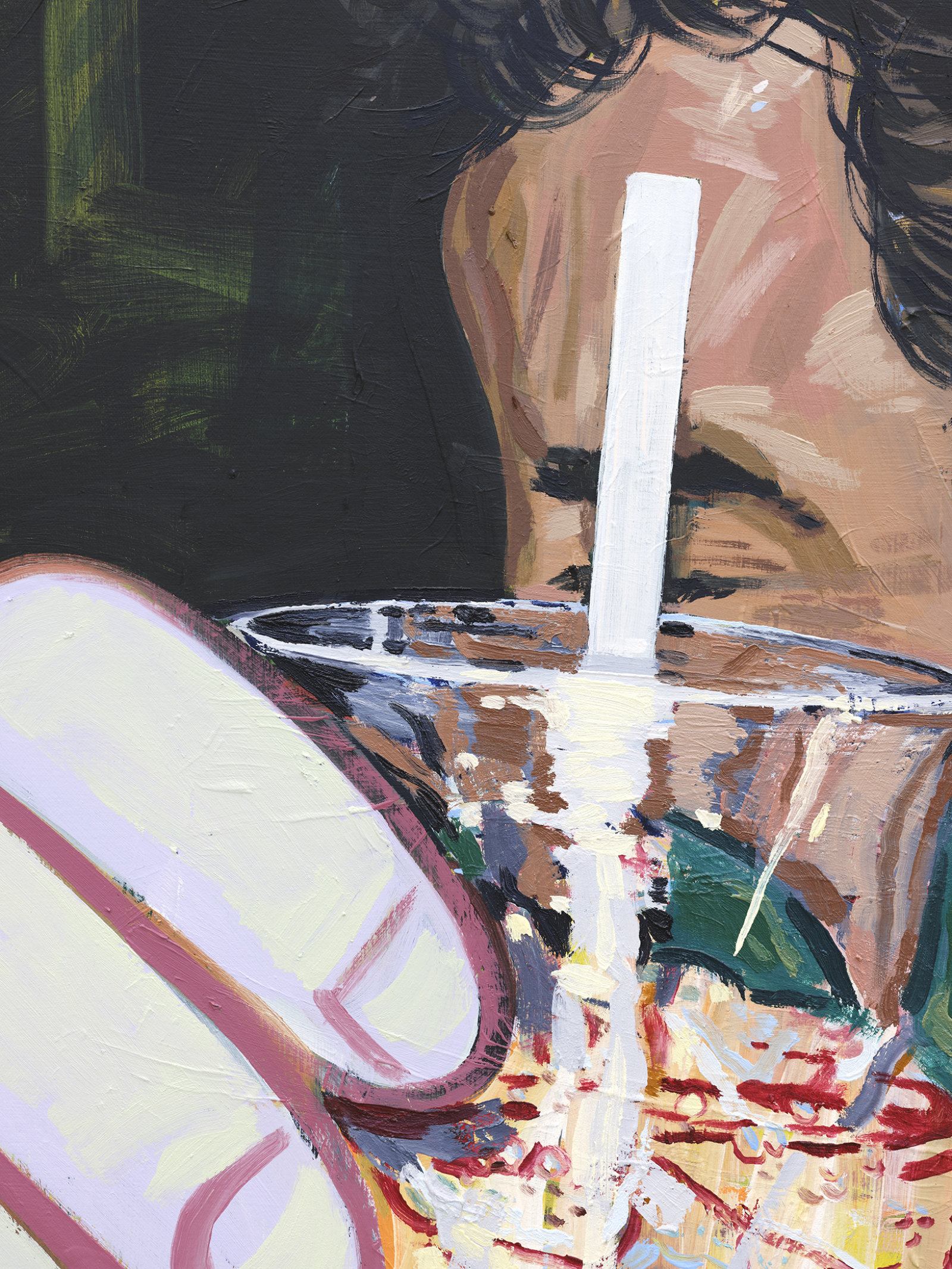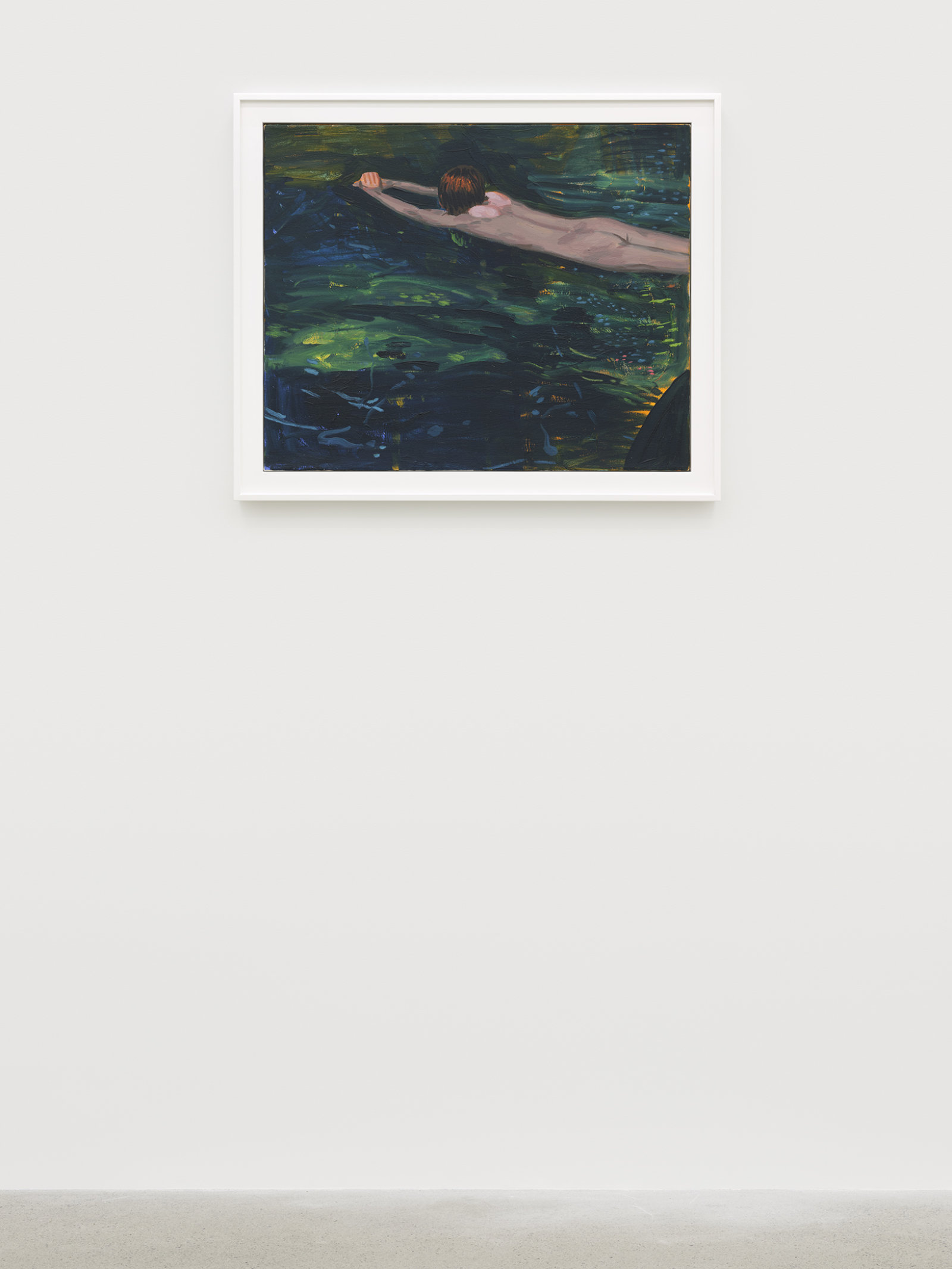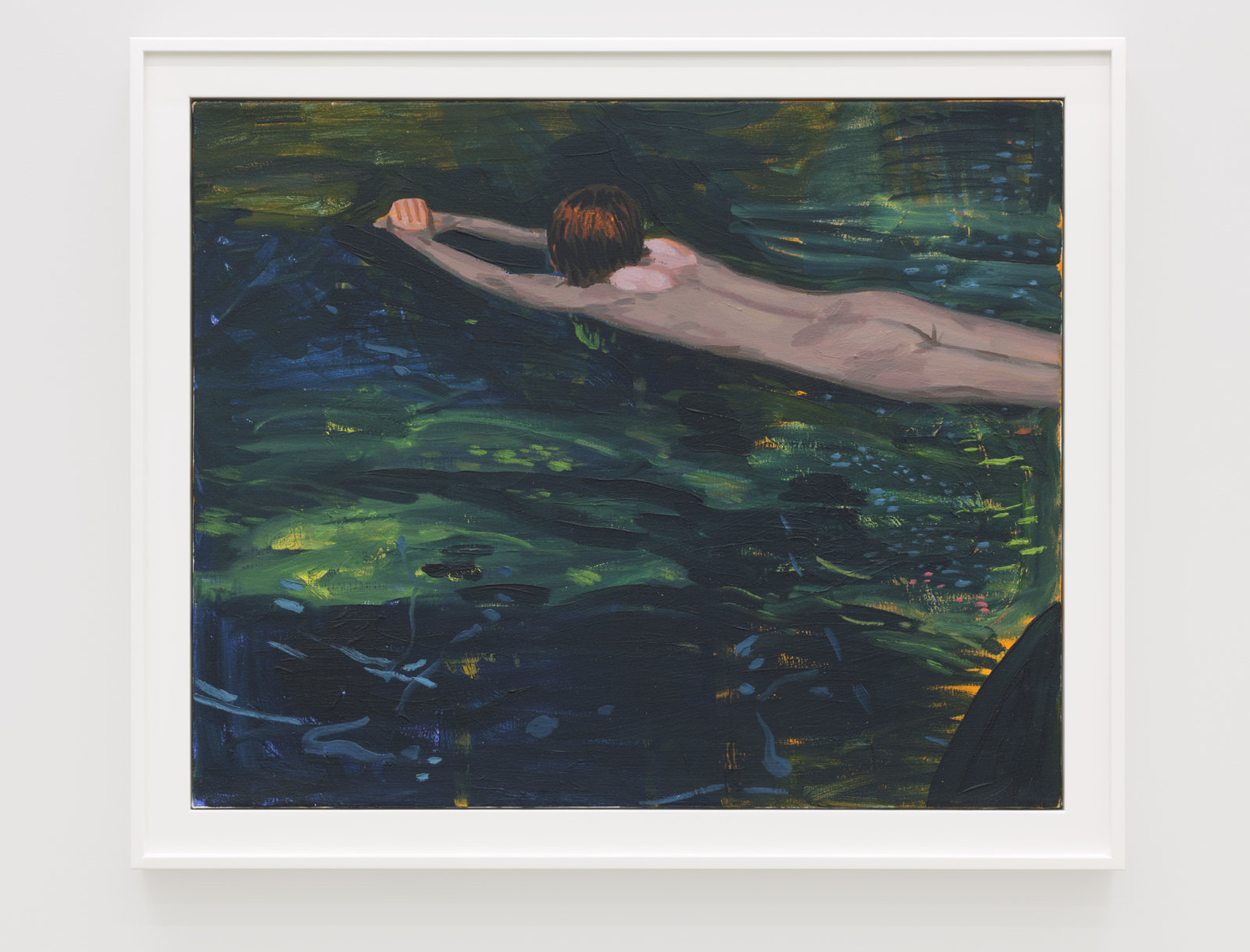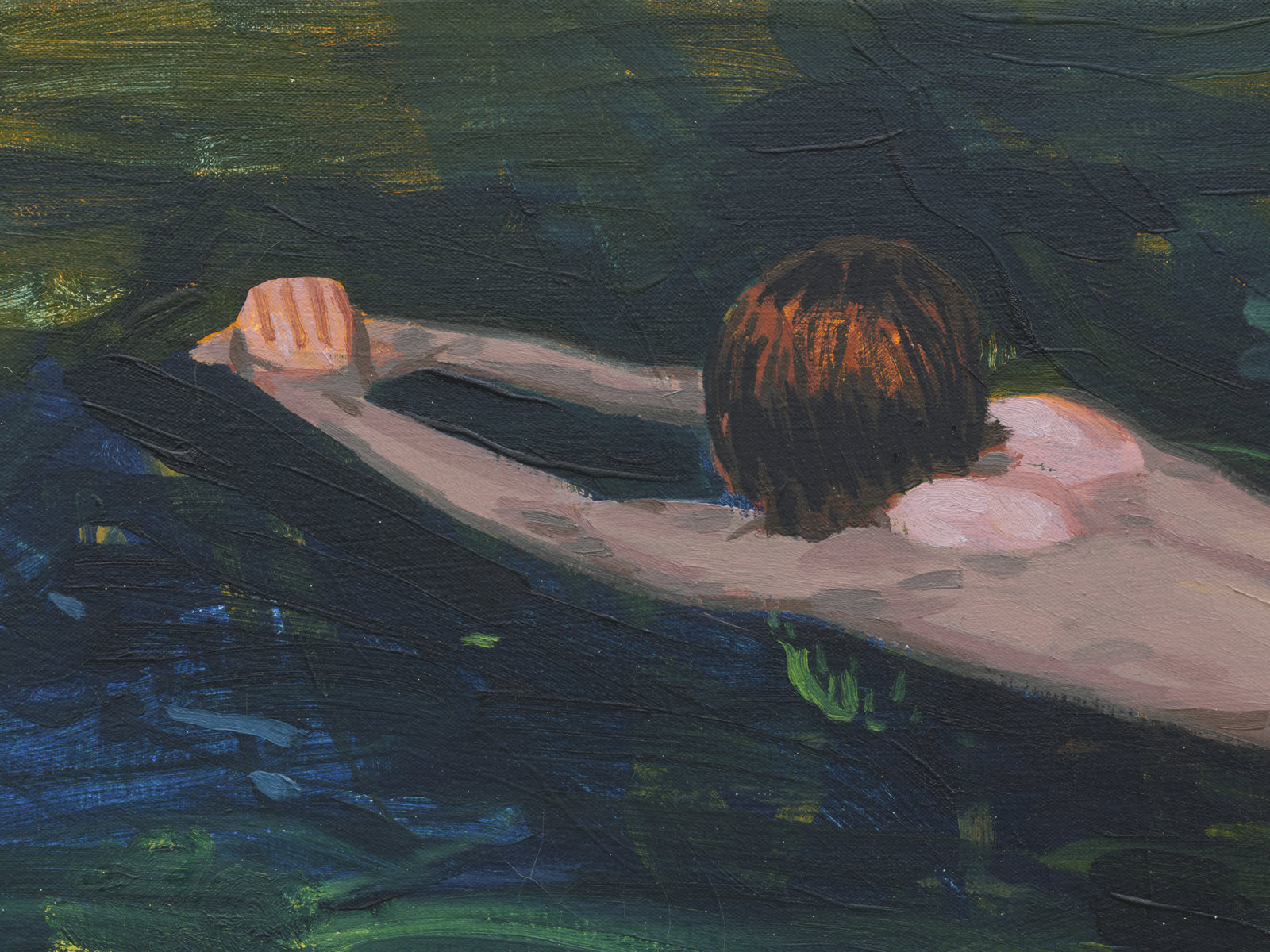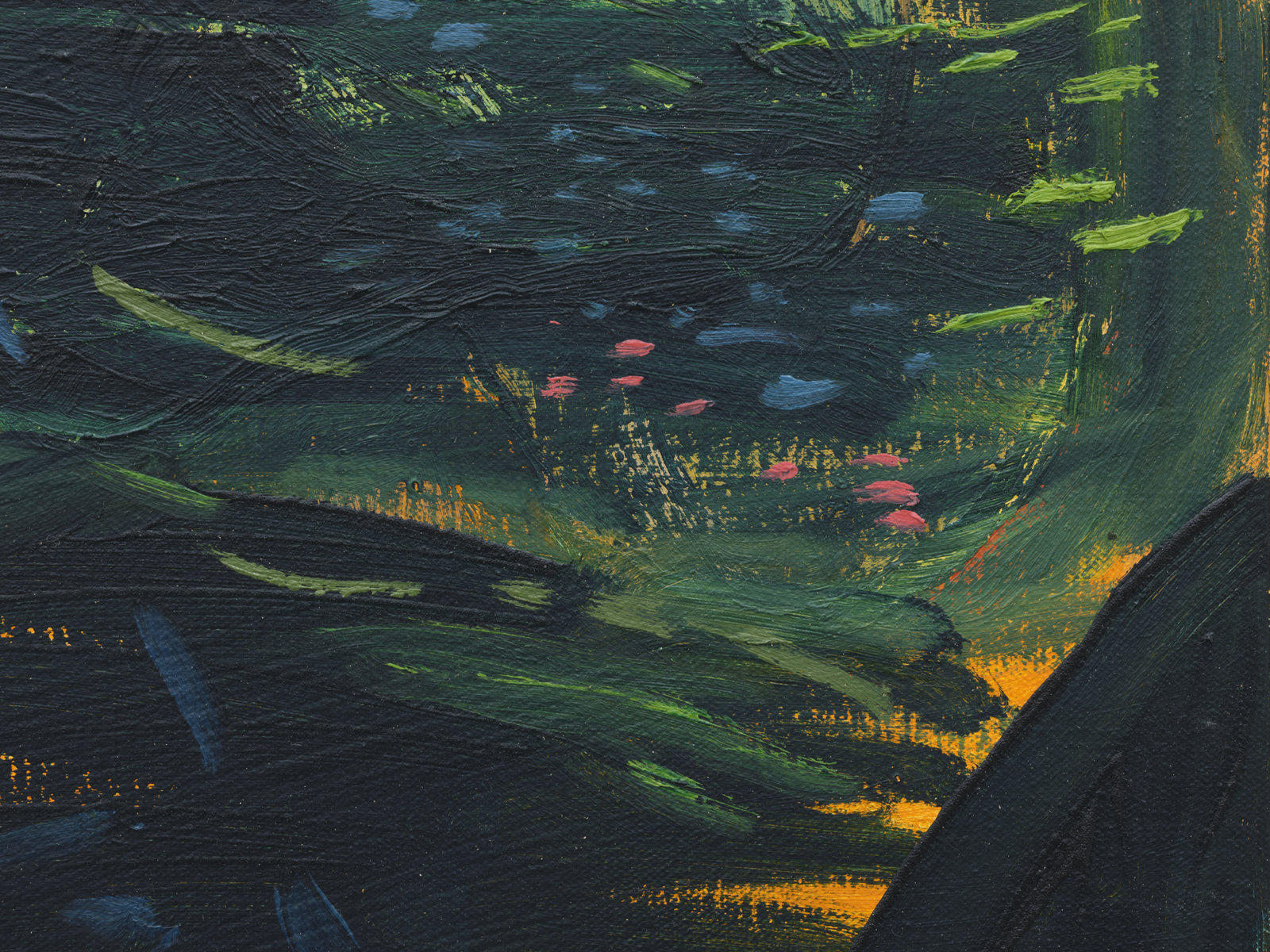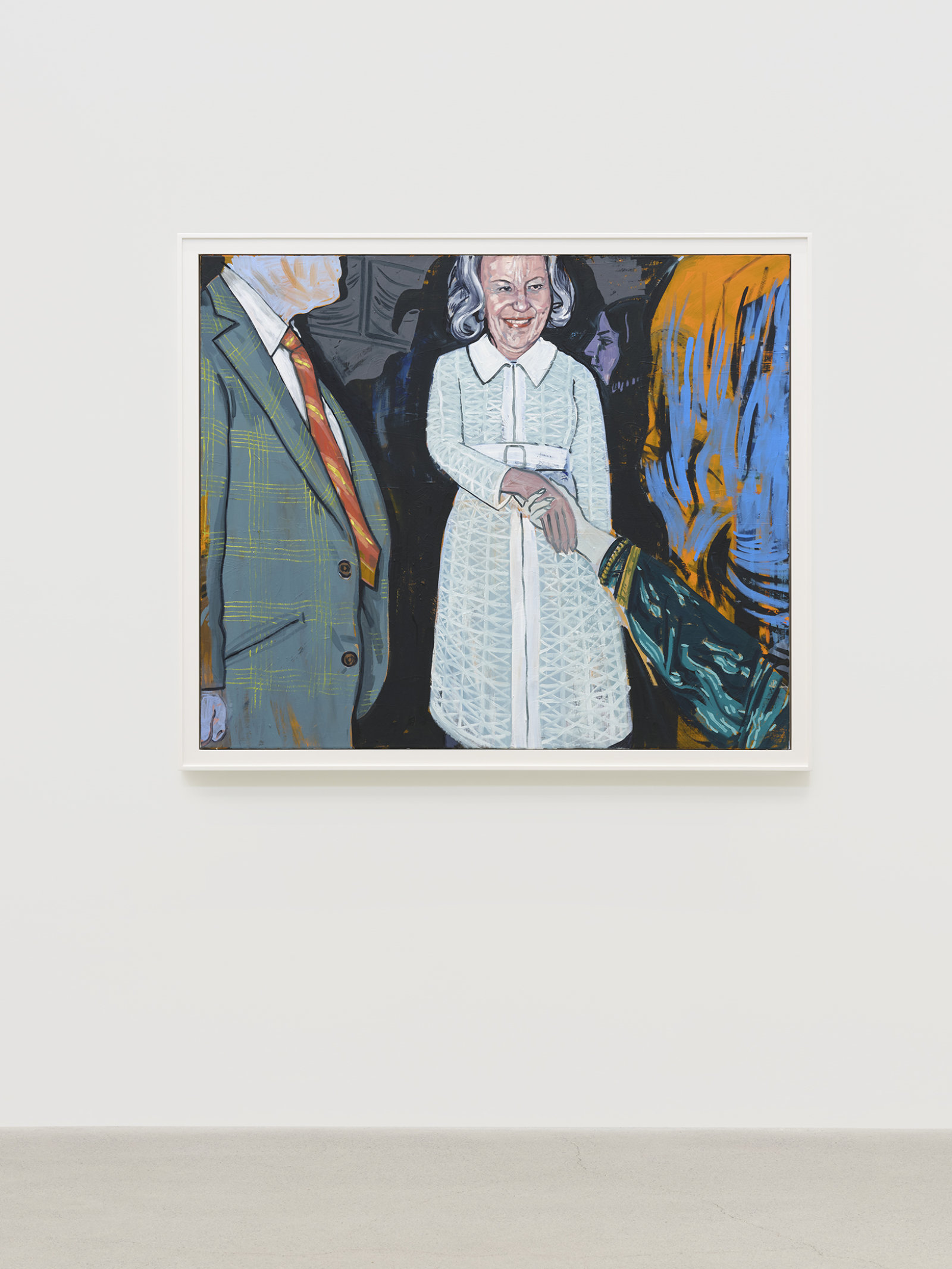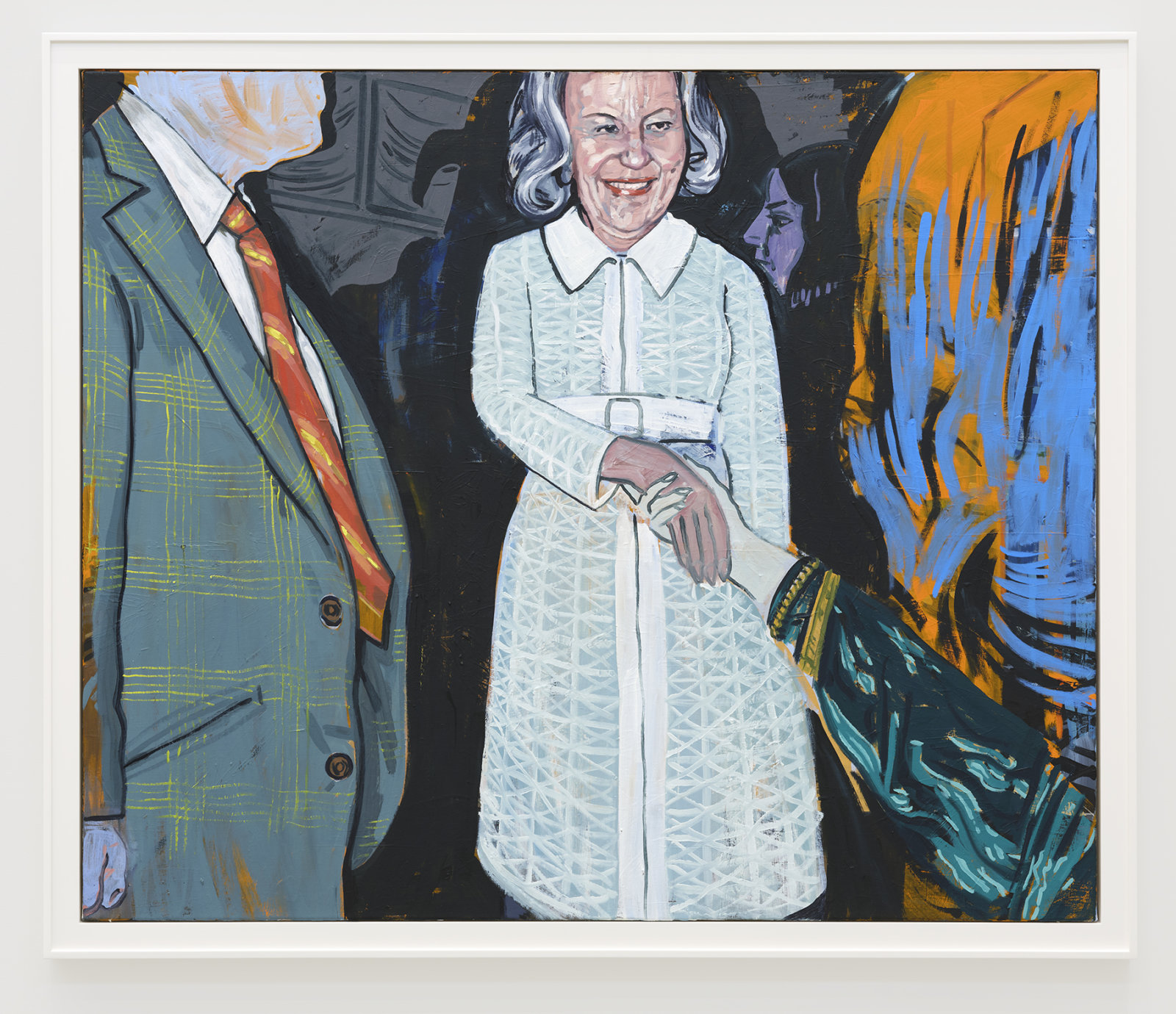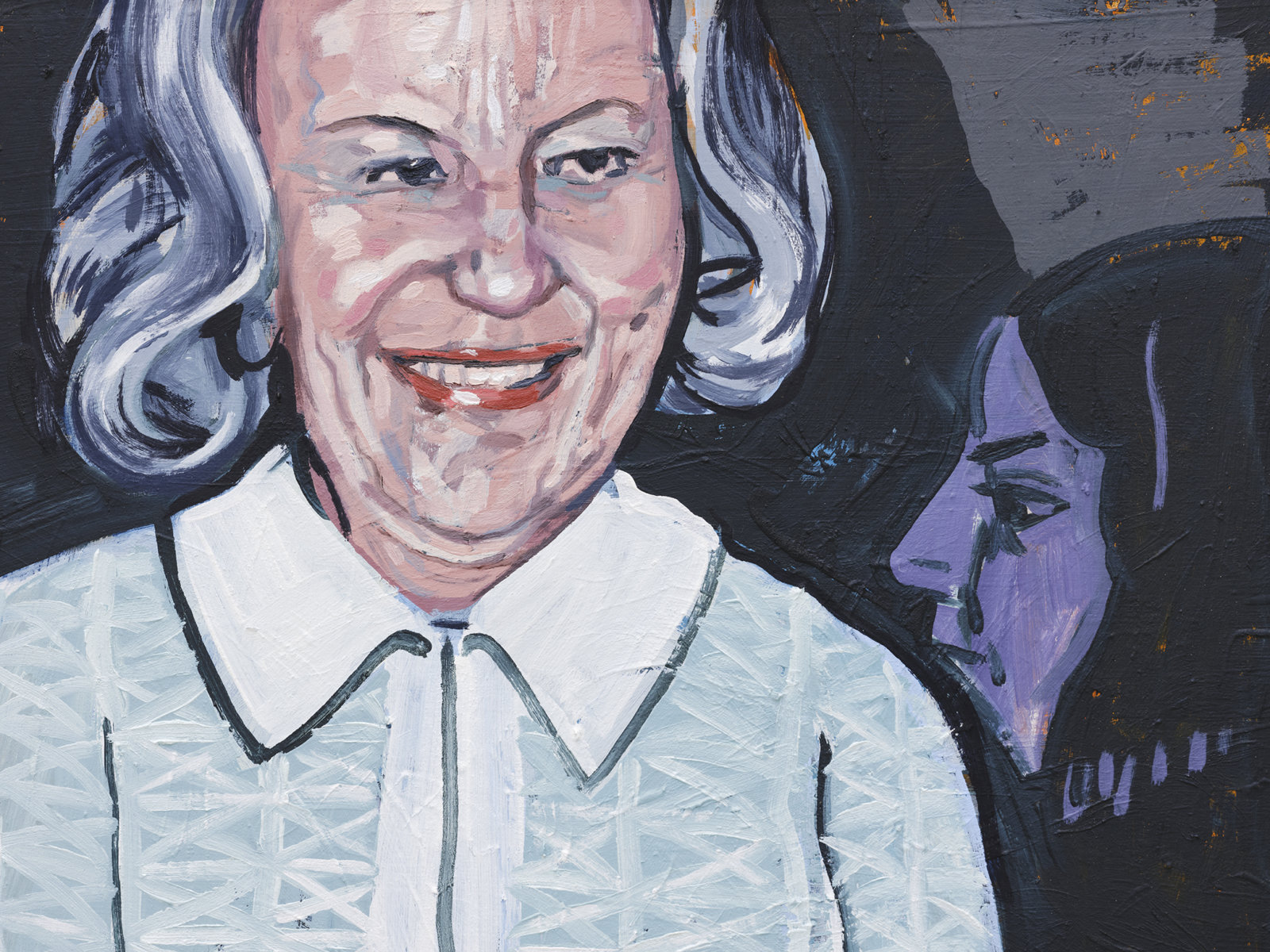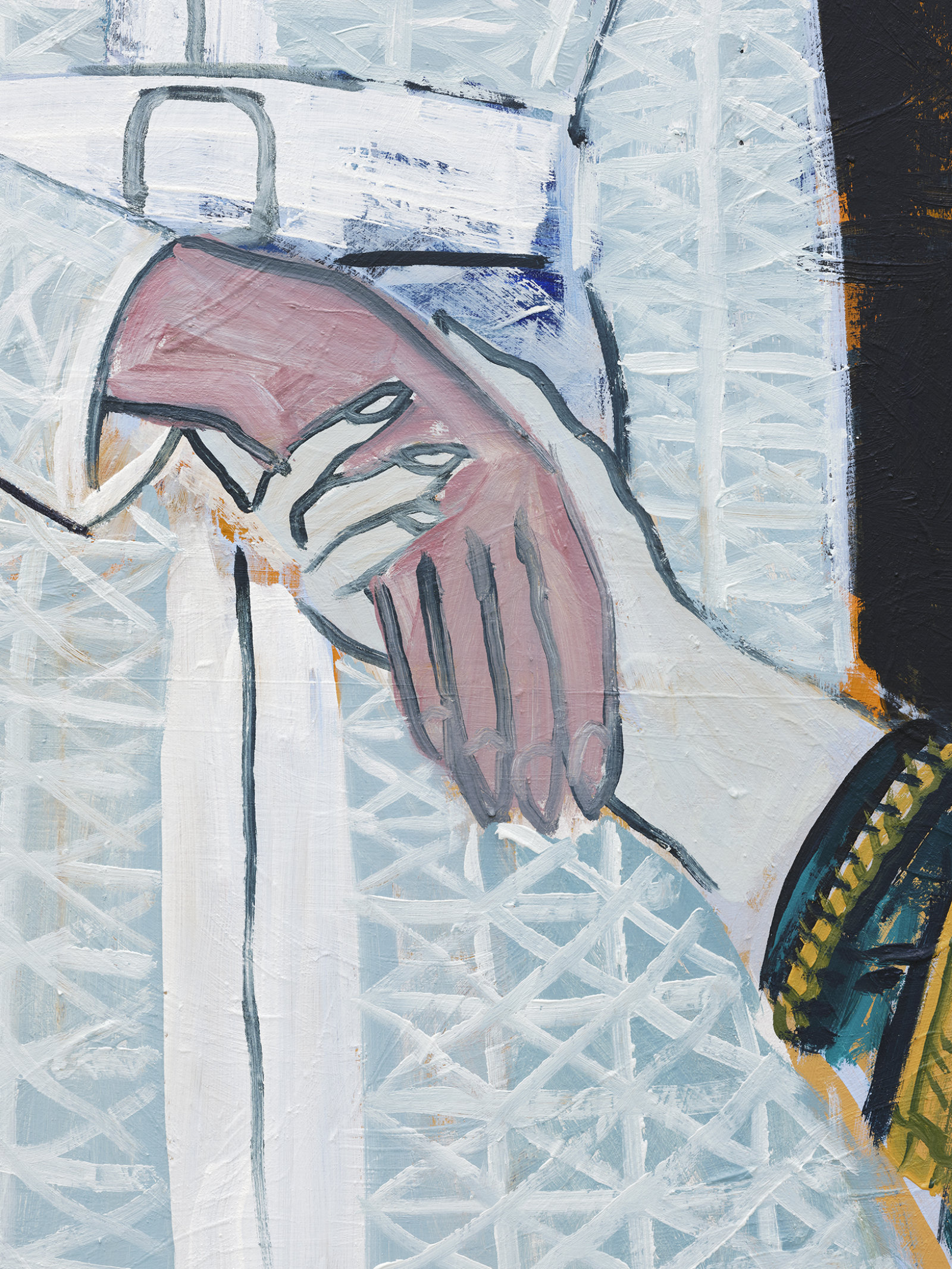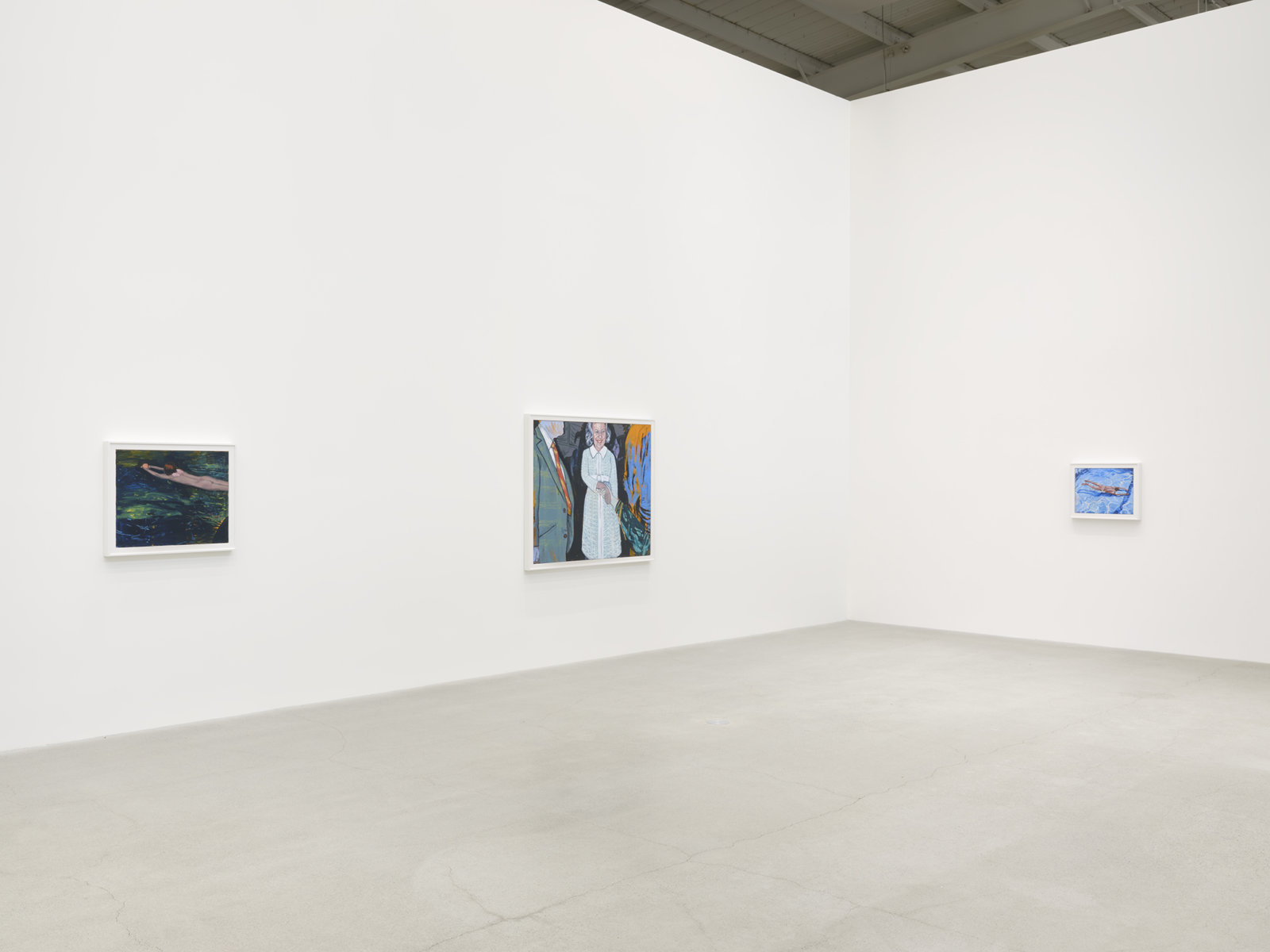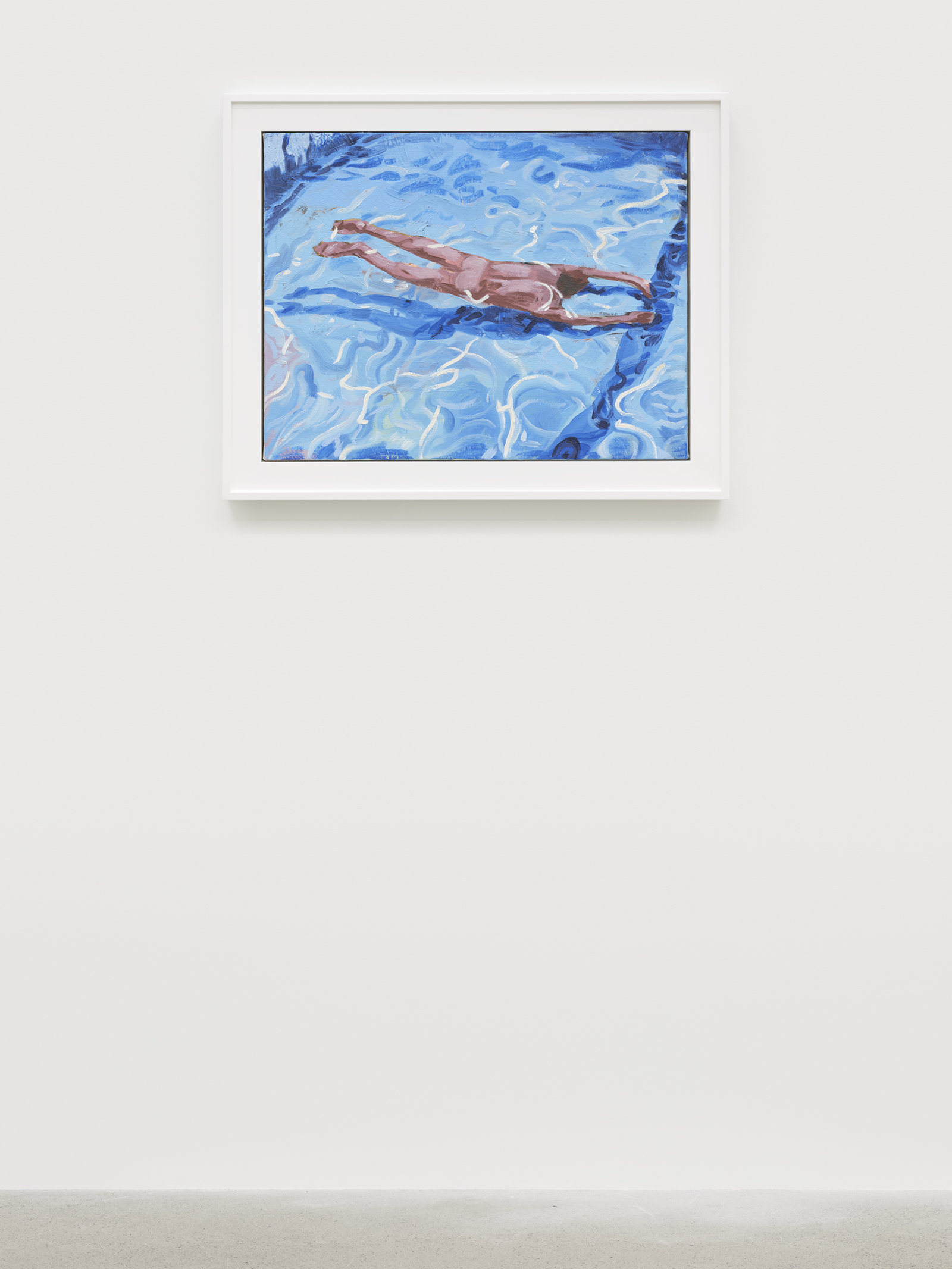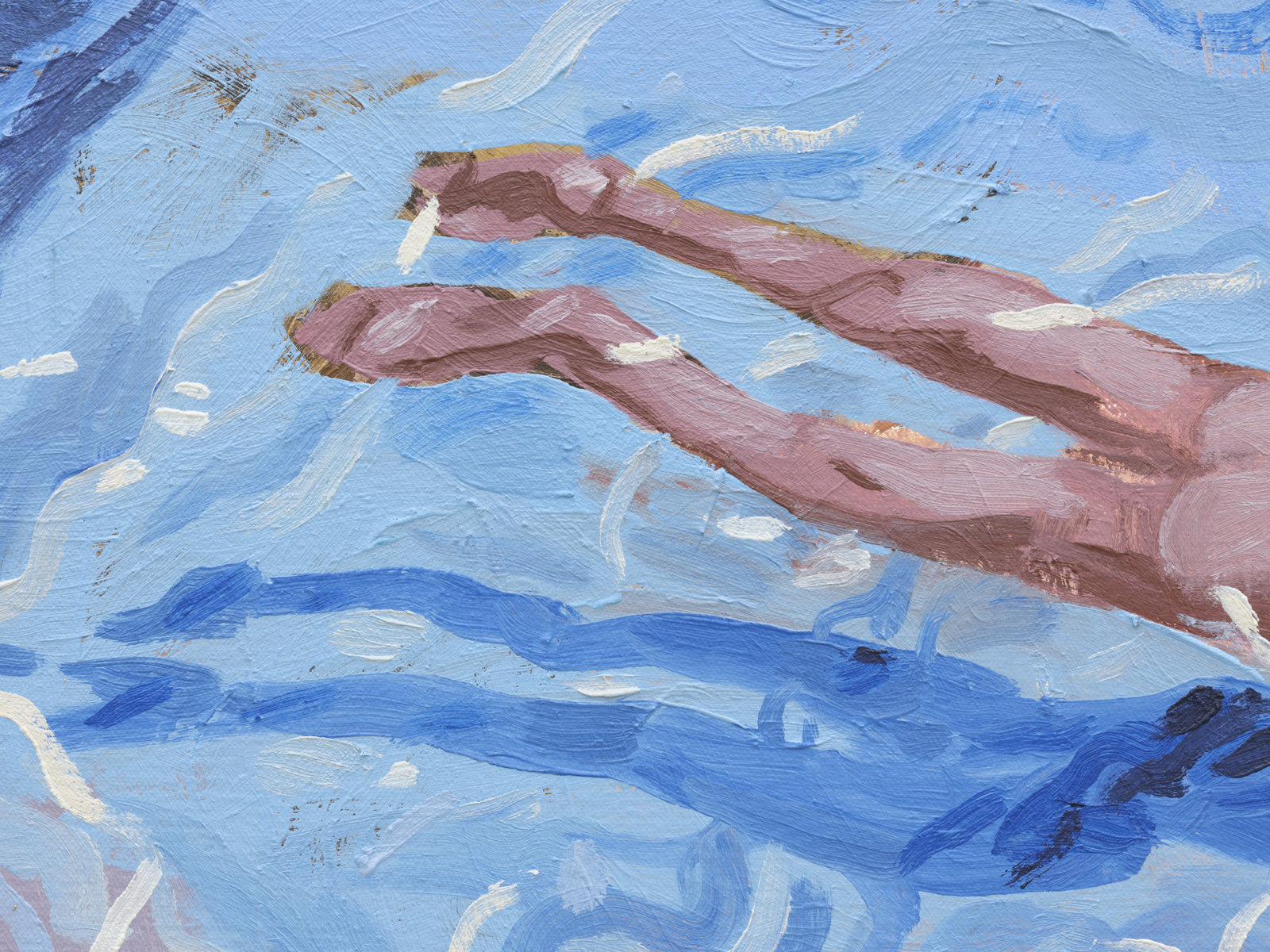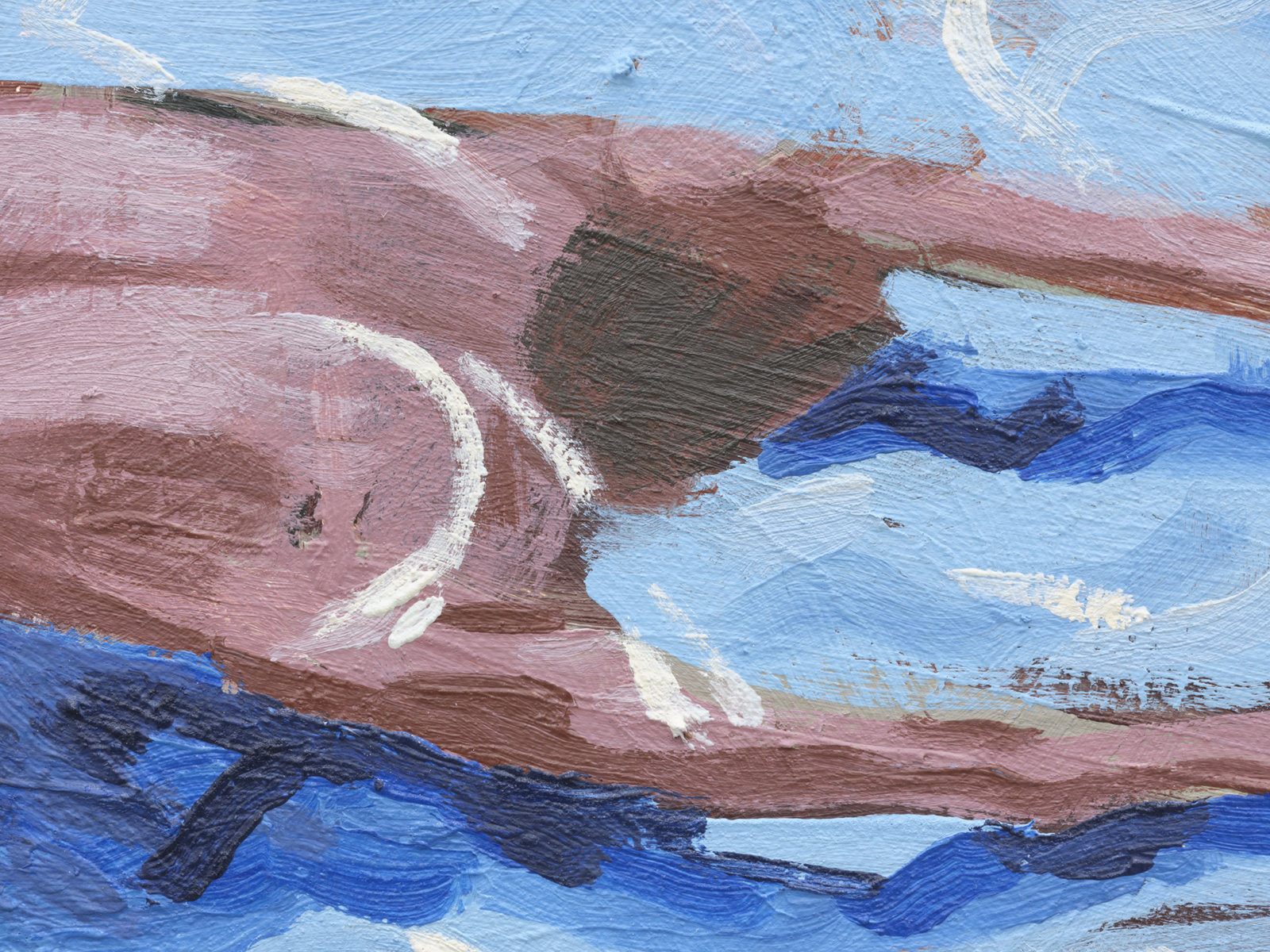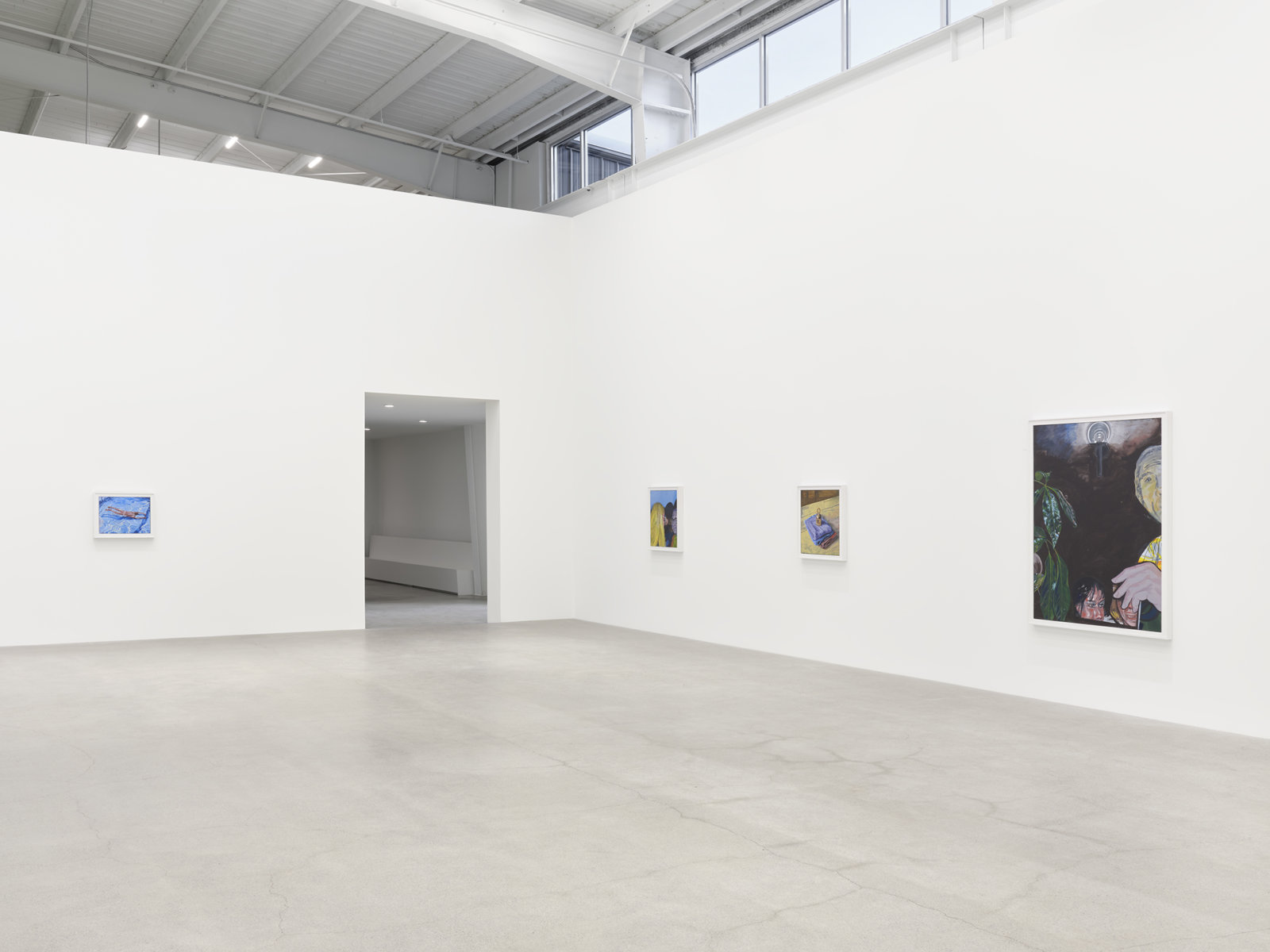Damian Moppett – Vignettes, FEBRUARY 13–MARCH 27, 2021
Damian Moppett
Vignettes
February 13–March 27, 2021
Catriona Jeffries
In Vignettes, Damian Moppett presents a focused exhibition of paintings that expand his practice into explicitly figurative paintings originating in the photographic image. These are vignettes both in the intensity of their formal rendering and in the potency of their suggested narratives. They offer a prescient consideration of how social media and advertising use the structure of vignettes to capture our attention and capital, which these works have seemingly little regard for.
The paintings’ sources are both historical photographs from Edward Steichen, Dorothea Lange, André Kertész and Lee Friedlander—ranging in dates from 1917 to 2006—as well as Moppett’s own recent still lifes. While they are well-known photographers, the images themselves are difficult to specify and act as kind of shorthand for the paintings, providing a challenging scaffold to work upon. Any available contextual information must be scavenged from the artworks. Figures are consistently tightly cropped, most with harsh flash, articulating space in relation to the camera and making sharp contrasts with weird shadows—an aesthetic Moppett has consistently revisited since the ’90s. Art historical painting is still present and accounted for here: by painting one of Friedlander’s ’70s art opening photographs, Moppett conjures Philip Guston’s paintings of the same period. Elsewhere, a flashed-out haircut from the era transforms into a haystack of Van Gogh, all while remaining within Moppett’s distinct palette and strangely powerful re-imagining.
Here, the reference images are removed from their time period, not only by adding colour to the black and white originals, but the content itself seems at odds with its almost fantastical rendering. Moppett accentuates grotesque characters in his emphasis on spatial relationships, colour, and shadow density. These are truly strange paintings depicting off-kilter situations and spaces that connect yet move beyond their source.
Formally, the majority of the works have three or four layers of paintings underneath, which for various reasons were unsatisfactory. Moppett then allows elements of the previous painting to be uncovered in the final work or remain as texture below. Often the image provides an area he is disinterested in painting, and so by leaving the underpainting visible it provides elements that would never be considered—a readymade spontaneity, “a guaranteed accident always available.”
Documentation by Rachel Topham Photography.
